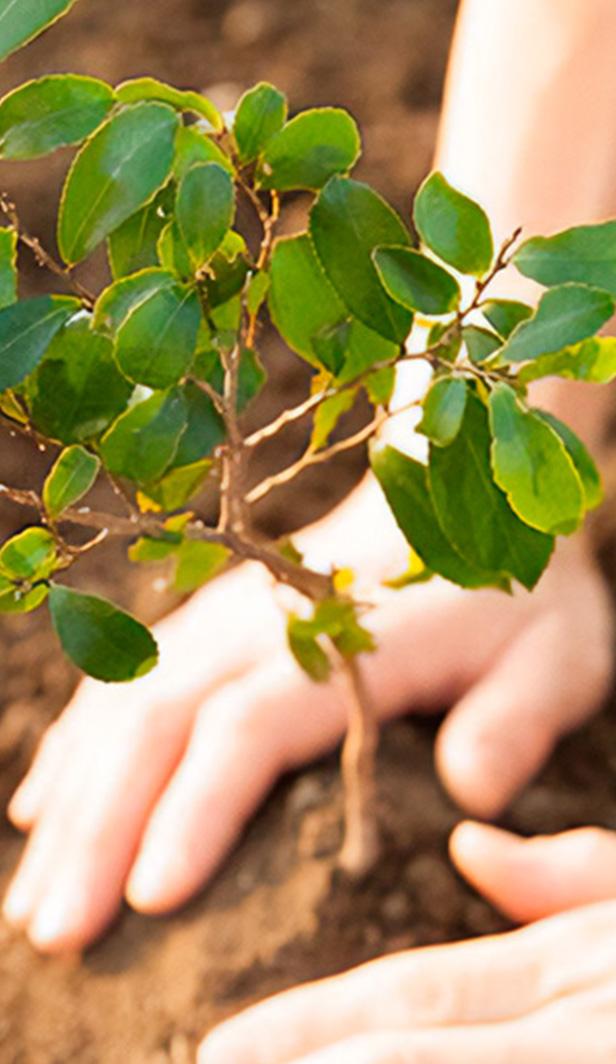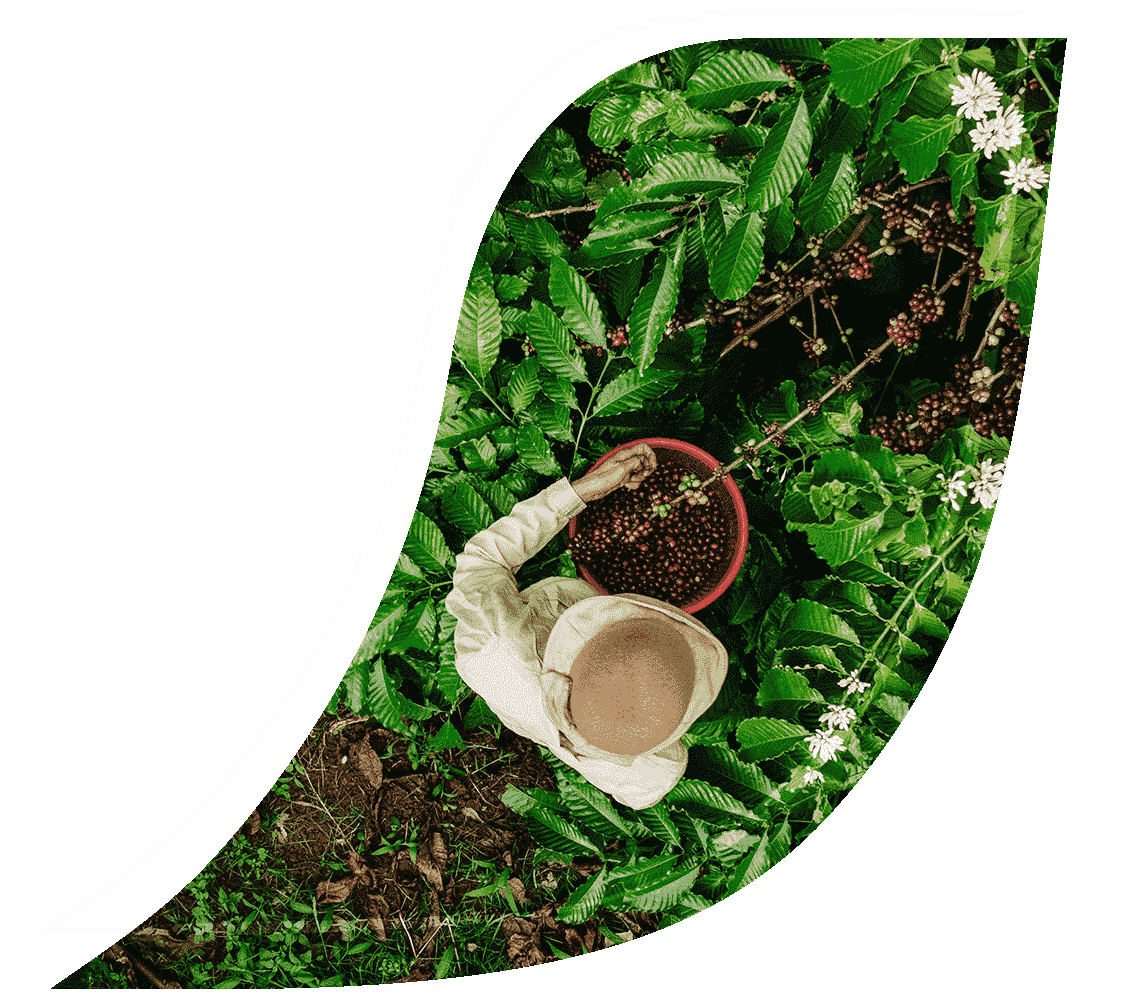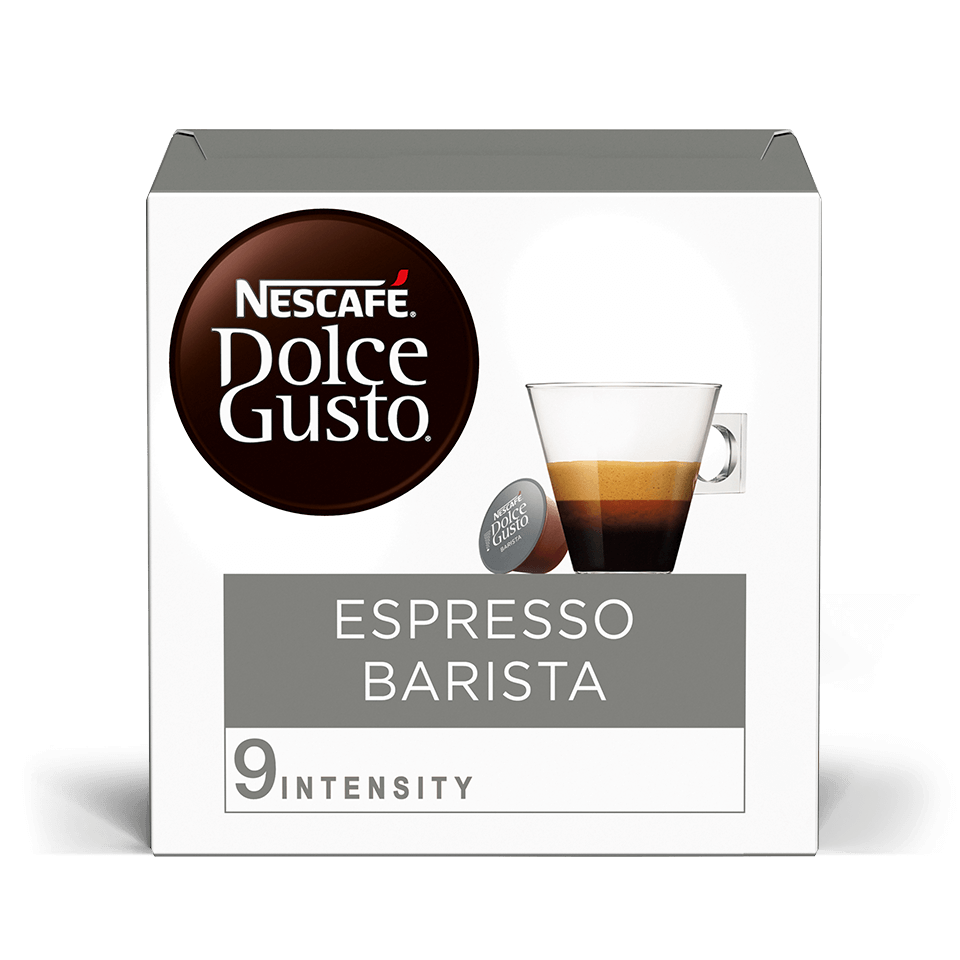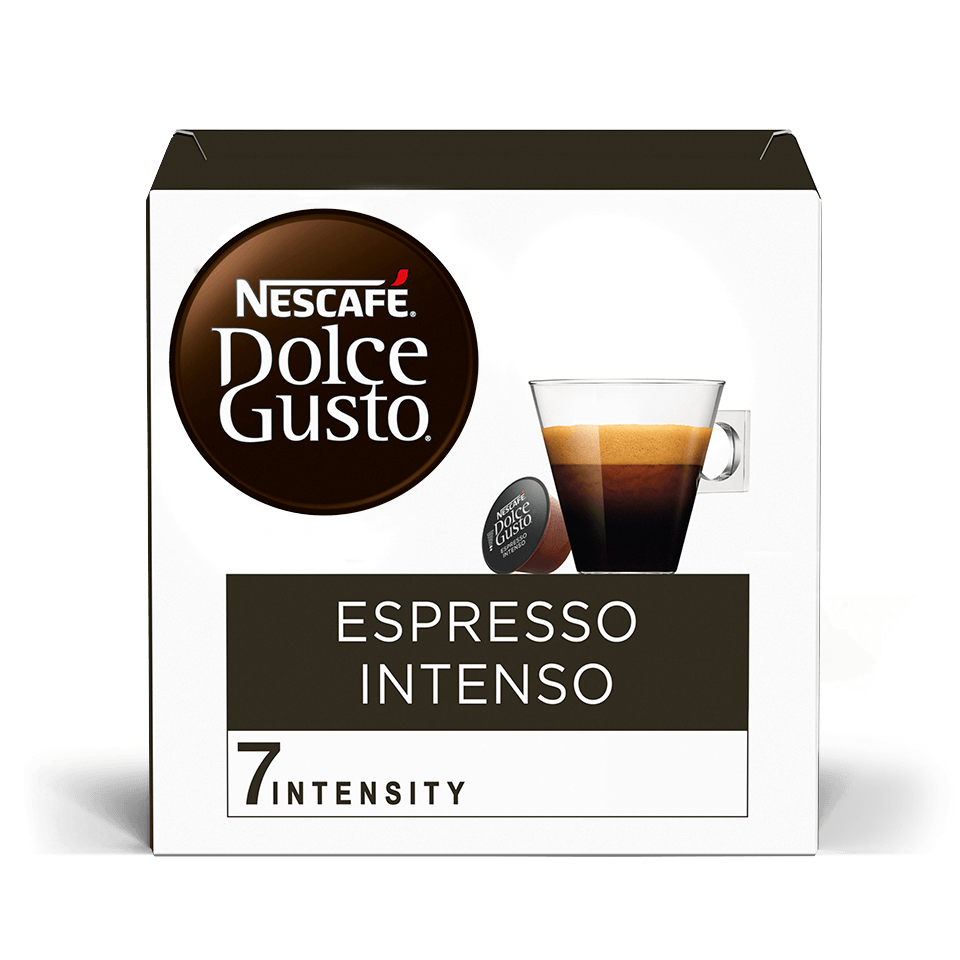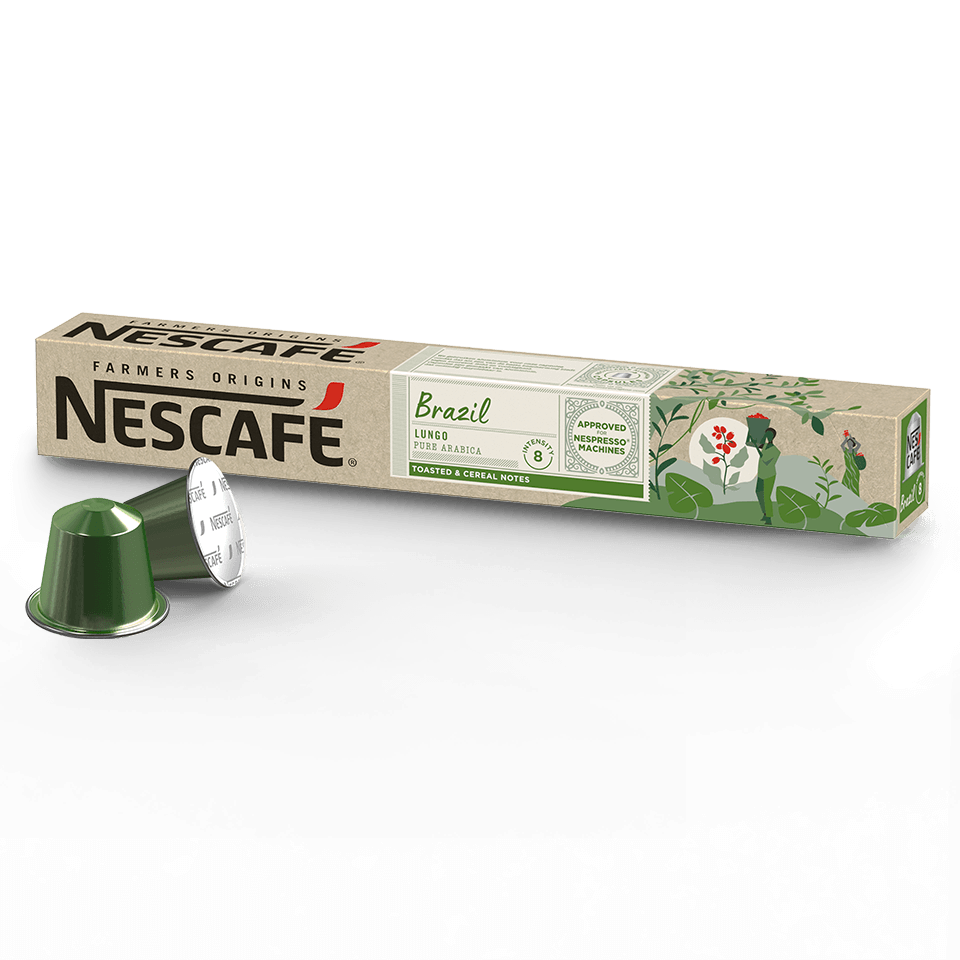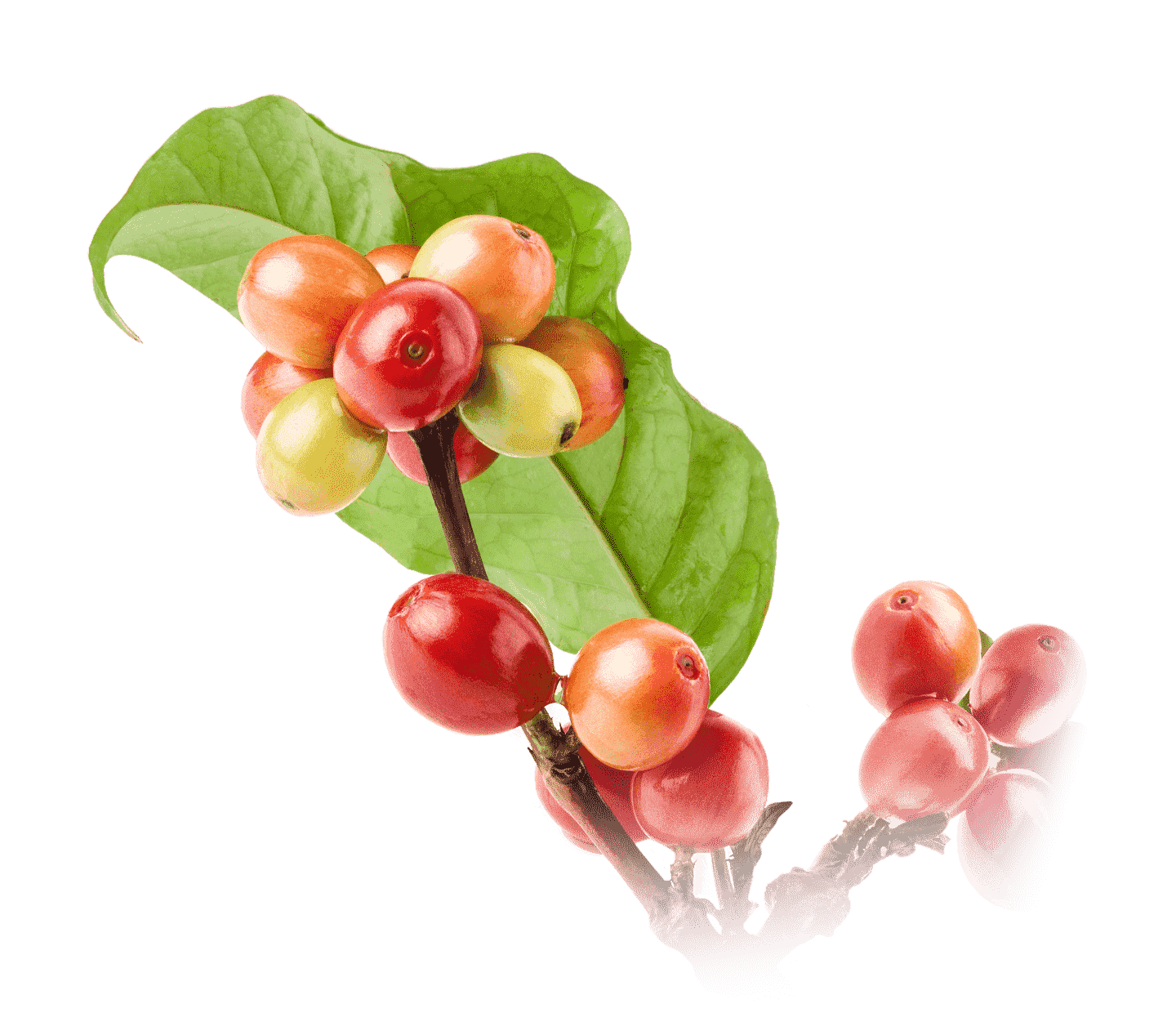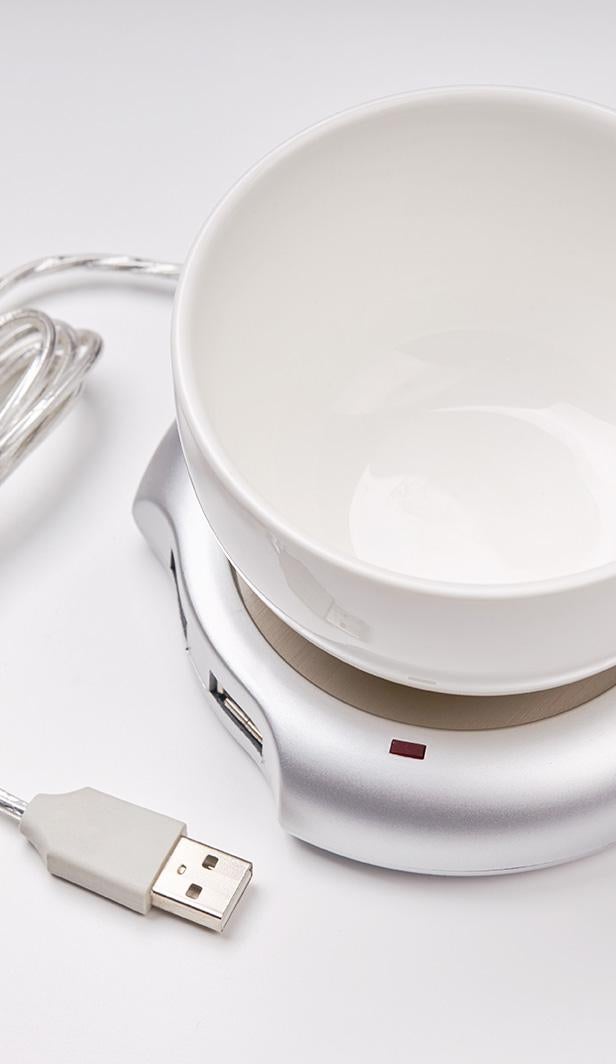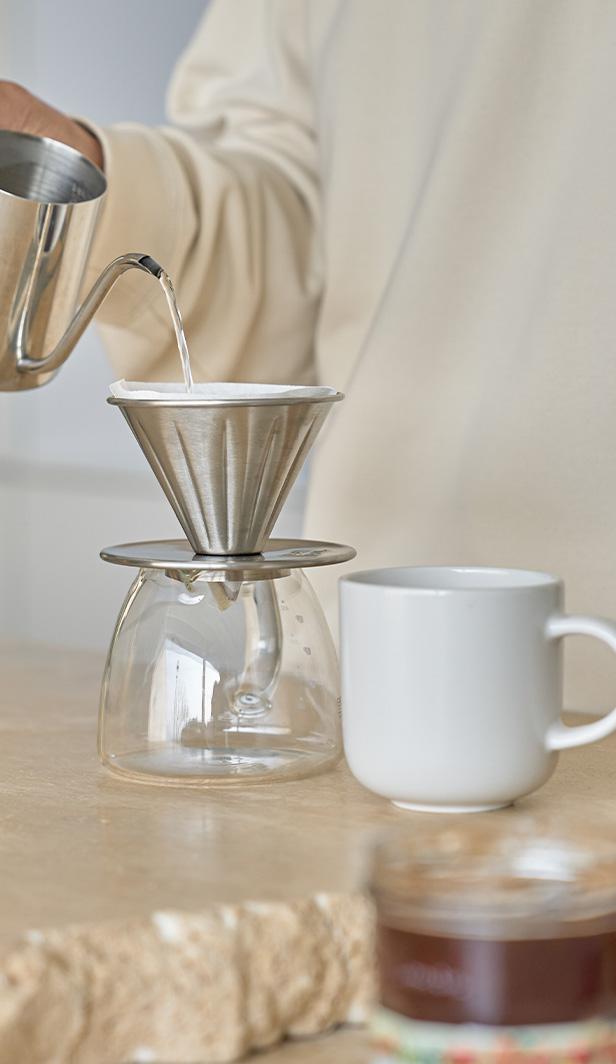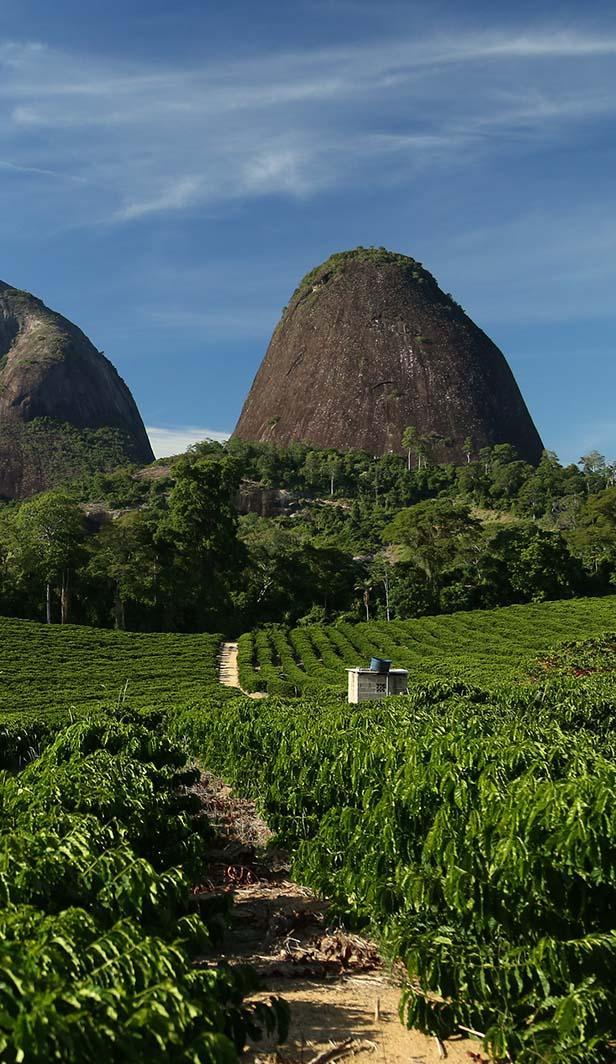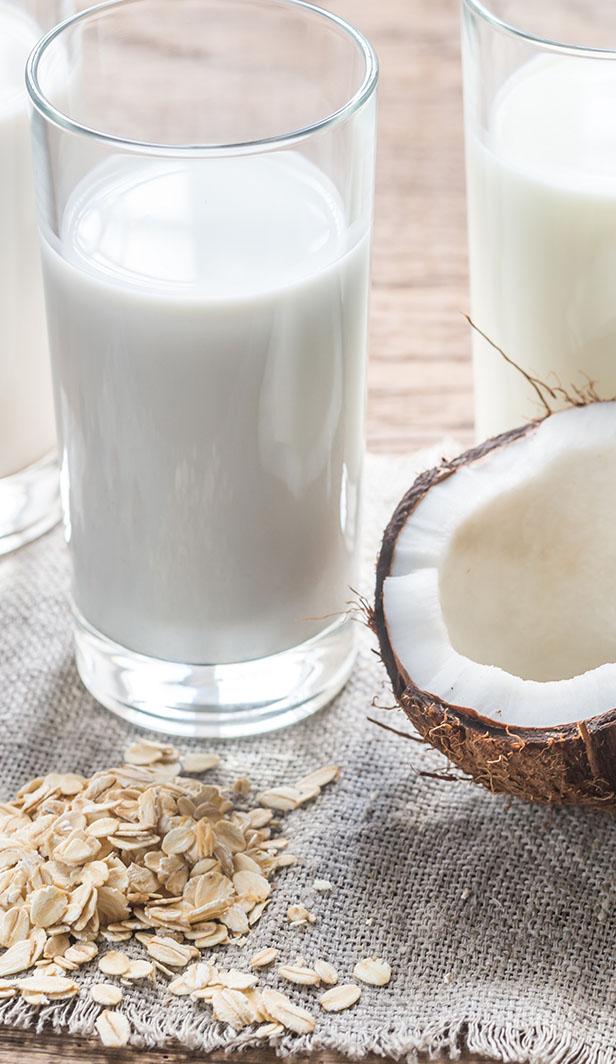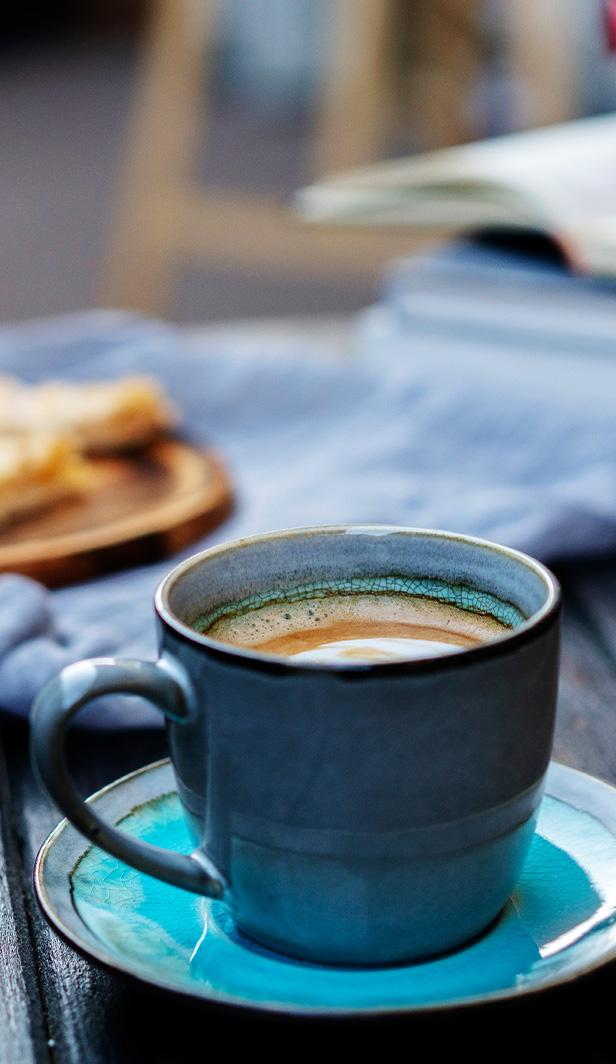Closing The Loop
Creating a better future for coffee means finding more ways to use spent coffee beans. By converting it into biofuel, we’ve managed to lower our carbon footprint at many of our factories – preventing 195 000 tonnes of carbon from being released into the atmosphere every year.1
Biofuel is renewable energy source made from natural materials; in our case it’s made from coffee grounds or coffee by products, which we then use to help partly power our steam boilers, and also to help keep the lights on at 7 of our 8 factories around the world.
We’re helping farmers in Vietnam to cut water use in irrigation by 40% through more efficient regenerative farming practices such as reducing the amount of water run off, pooling and evaporation after watering. This benefits the farmers directly by reducing their water bills and benefits surrounding communities by giving them access to more water.2
Making high-quality coffee requires time, energy and resources. That’s why we’re constantly looking for ways to build more circular economies where waste is reduced and wherever possible raw materials are reused - especially when it comes to using natural resources.
At local farms, we’re helping to improve irrigation techniques which can reduce water usage while maintaining productivity. At our Tri An factory in Bien Hoa (Dong Nai province) we are using coffee grounds as biofuel to partially power our boilers and lights.
We're also training farmers to introduce diverse and regenerative farming techniques, including the planting of additional tree species at coffee farms. These methods not only enhance soil health but also reduce the need for chemical fertilizers.
Reducing water usage and reducing waste production, but still making quality coffee. It’s a dream for coffee lovers – but it’s a reality for us, and one we’re taking seriously. Together, we can support coffee farmers to run more efficient, more economical farms and in so doing, help build a more sustainable future for coffee, for everyone.3
Today’s community favourites
Discover some of the most enjoyed articles from across the site

Discover how Nescafé is sourcing coffee responsibly
What does «responsibly sourced» mean in our value chain?
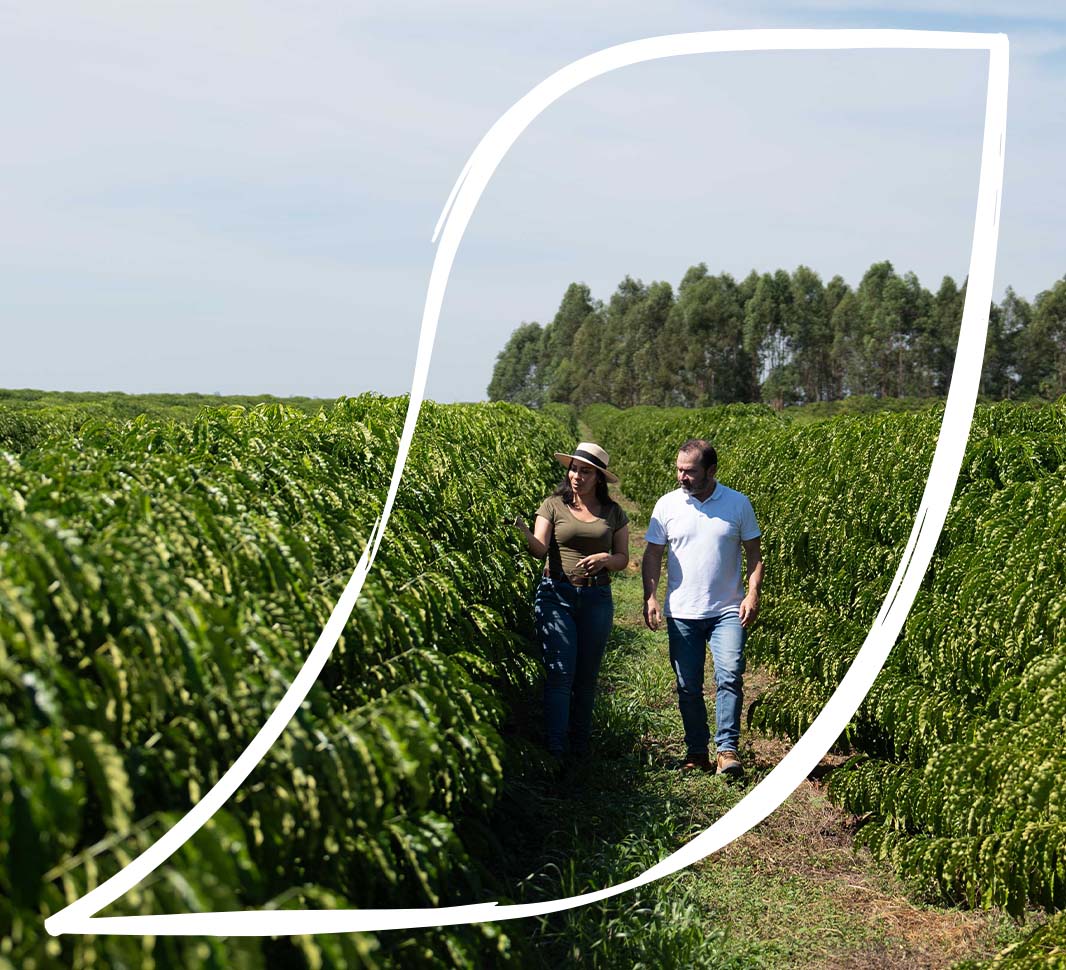
Working together
Our coffee is traceable to the group of farms where it was grown and verified in accordance to sustainability standards from independent certifier programmes.
At Nescafé, we work with various external programmes who are independent third-party organizations, such as 4C, Rainforest Alliance, which have established their own publicly available sustainability standards.
The sustainability standards of the external programmes we work with, meet our Nestlé Responsible Sourcing Core Requirements, that encompass various aspects of coffee farming, including social and environmental practices, for example farmer's working conditions, optimizing soil fertilizers, among others.
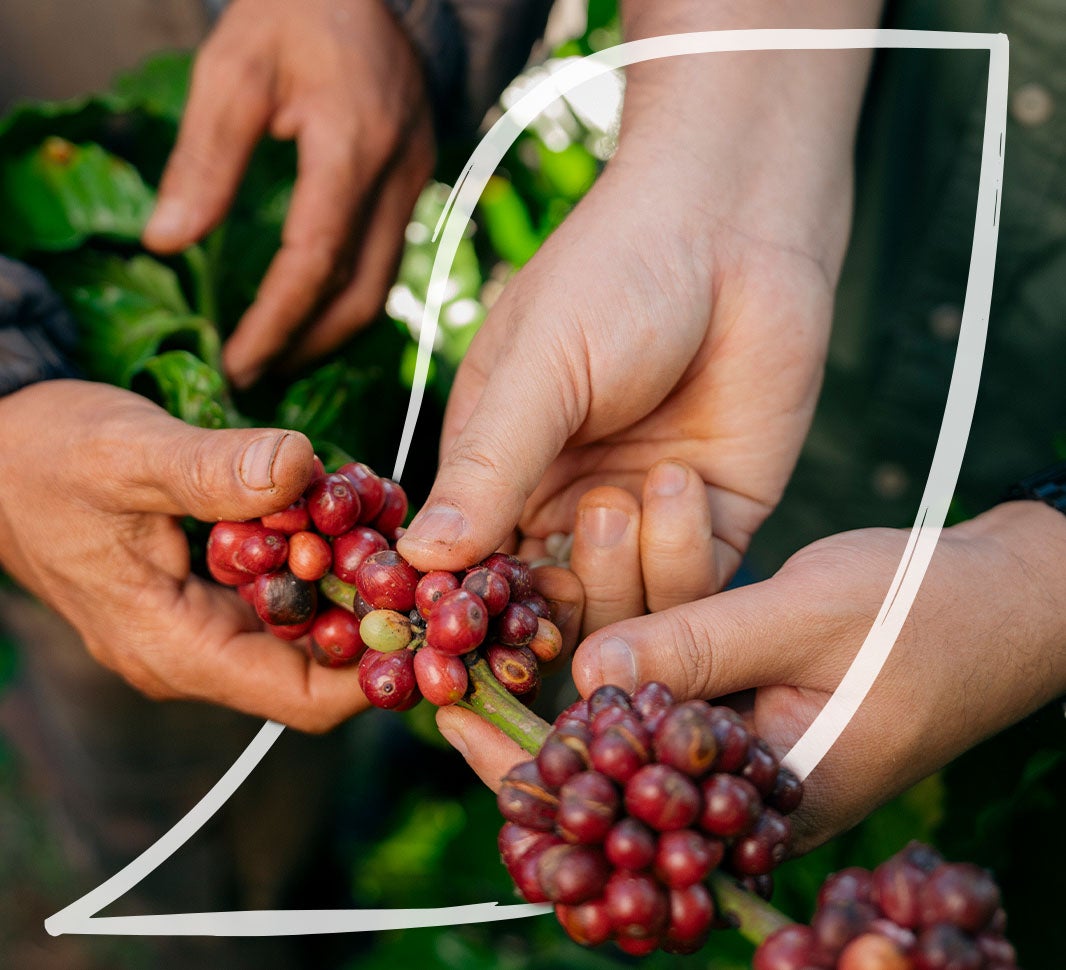
Taking actions with purpose
We are taking actions to continue supporting coffee farmers in their communities wherever they are, so that they can improve their lands & livelihoods. Here below some examples of initiatives:
- • Supporting coffee farm renovation for better resilience and quality, by distributing over 290 million coffee plantlets since 2010.
- • Through more than 800 agronomists and across 16 countries, enabling more than 148’000* coffee farmer trainings every year to improve their farming practices.

Today’s community favourites

Growing With Coffee
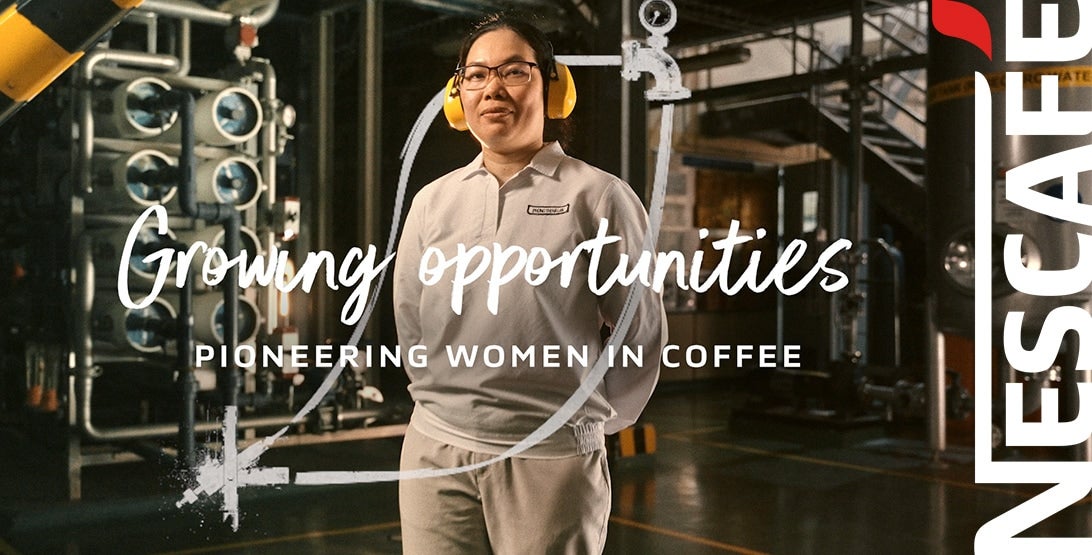
Phung Thi Ha Lan believes engineering can make a difference. Always keen to learn and progress, she didn’t think twice when offered the opportunity to help build the Tri An NESCAFÉ® Roastery. “During the design phase for the factory, we already considered sustainability in our process,” she says. Now the Industrial Service Manager in the Engineering Department, her roles and responsibilities include taking care of maintenance operations, and improvements to the system.
Solutions-driven and passionate about everything she does, Lan is incredibly close to her team, and on a constant mission to keep them inspired. This passion goes beyond the workplace. She often hosts knowledge-sharing sessions with university students where they discuss the purpose of engineering. In addition to explaining how the factory operates, she encourages these young women to explore more technical careers and become part of the next generation of engineers.
A mother of three, Lan understands the importance of work-life balance. She makes every effort to spend quality time with her kids, using these opportunities to tell them about her work, and how she’s contributing to a better future. “I explain to them, in a simple way, how we care about sustainability, because they also learn about environmental protection in school,” she says. Once, after doing this, one of her children announced a desire to become an engineer too. “I felt very proud,” smiles Lan.
"In addition to learning how to be a better farmer, I learn about business* to improve the lives of my family and my community."
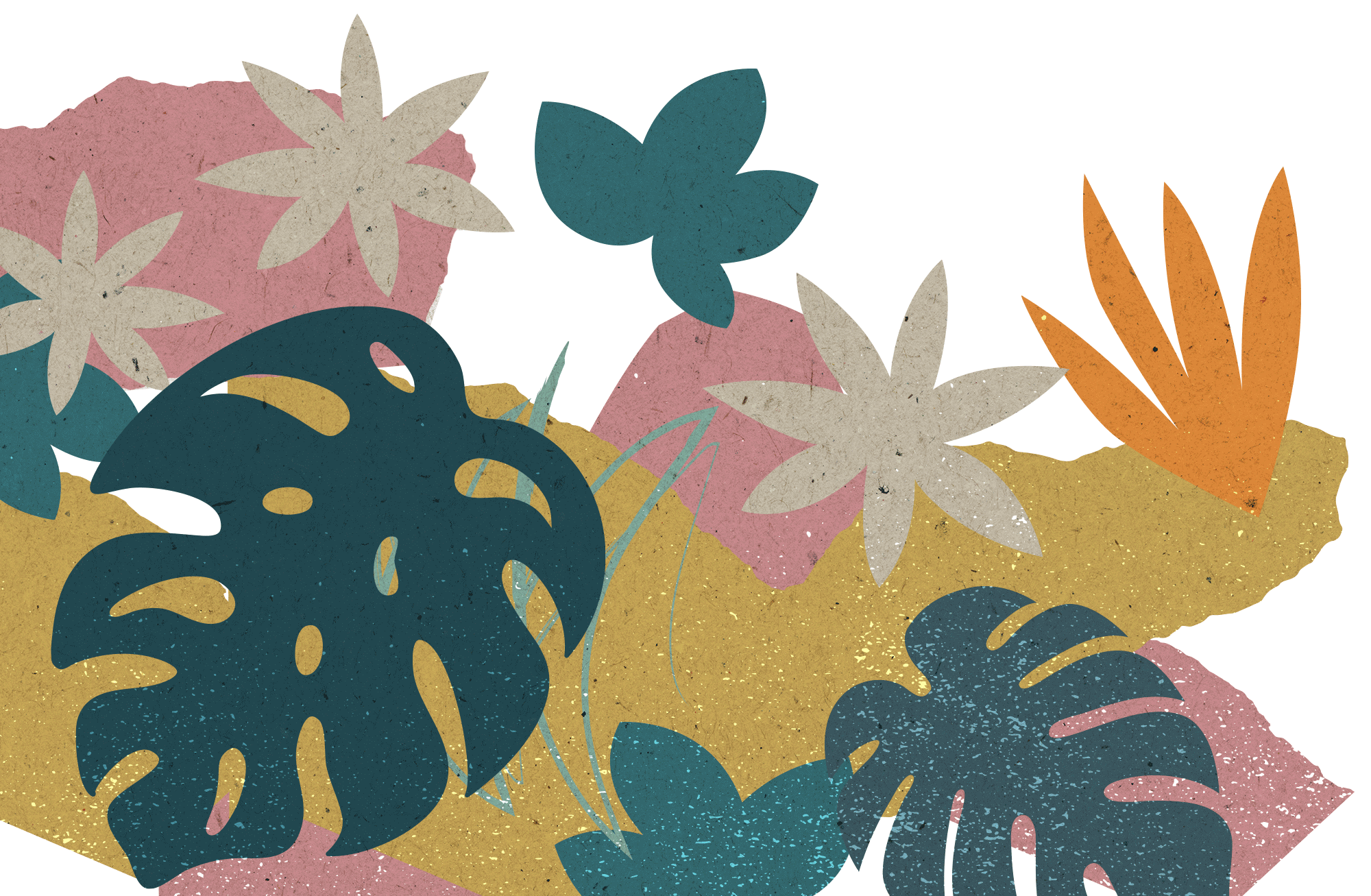
Farming methods evolve over time, and nobody knows this more than Tran Thi Lien. A second generation farmer, she studied regenerative agricultural practices to make her farm more successful. She learnt techniques that reduced time and labour, and adopted intercropping, introducing plants that increase her farm’s productivity. The results were transformative, and now her farm functions as a business. “I have increased the efficiency of land use, thereby increasing my family's income,” she says.
Tran Thi Lien's deep knowledge helped her secure additional work as a lead farmer. She shares technical support and encouragement, inspiring others in her community to adopt regenerative agriculture practices. “The first thing is to introduce knowledge,” she says, believing that this will help other farmers prosper too.
Lien has noticed a positive change in lifestyle among her fellow farmers. She believes that by employing regenerative agriculture practices, they are farming more efficiently. “They have more time to spend with their families,” she says. These advanced methods have also contributed to farmers producing higher yields, leading to greater prosperity. “I'm so proud. I'm very happy,” she smiles. “Not only can I help myself, but I can also help the others.”

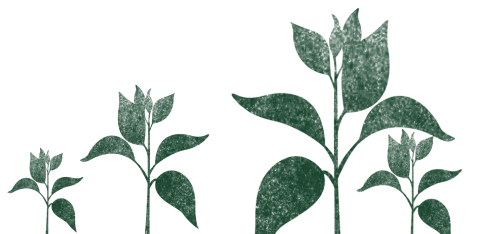
Better blends for a better world
Today’s community favourites

*Through the Nescafé partnership with GIZ’s Coffee++ program, farmers participate in a five-day intensive course designed to help them run their farms as businesses. NESCAFE Plan 2023, page 13: https://www.nestle.com/sites/default/files/2024-05/nescafe-plan-2030-progress-report-2023.pdf
Pack to the Future

-
recyclable jarrecyclable jar
-
made with responsibly sourced coffeemade with responsibly sourced coffee
NESCAFÉ® Classic
Your NESCAFÉ® jar's journey doesn't end when the coffee does. The jar is recyclable, making it a little easier to make a difference. Glass is infinitely recyclable, and the plastic lids can be recycled separately.
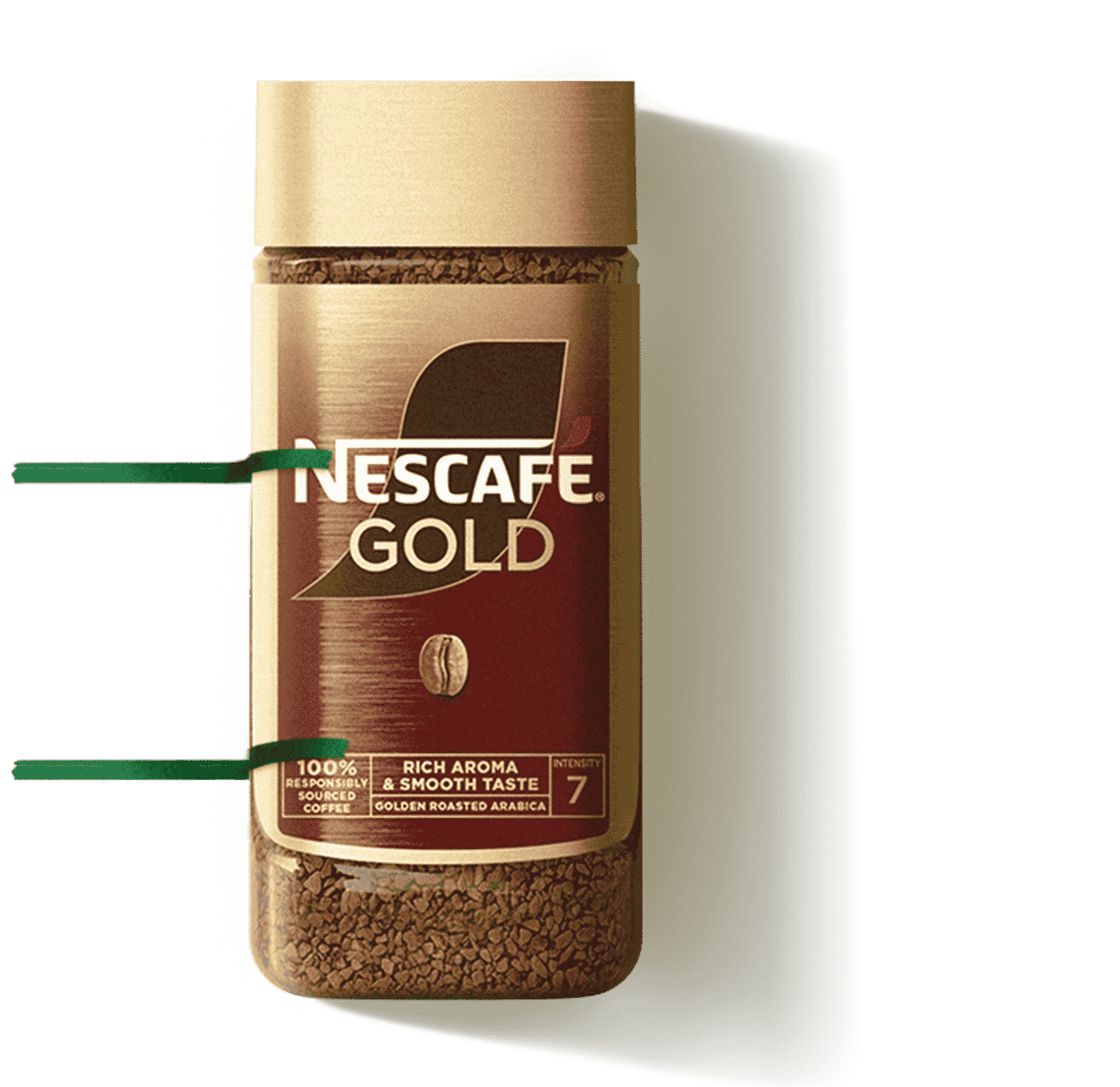
-
recyclable jarrecyclable jar
-
made with responsibly sourced coffeemade with responsibly sourced coffee
NESCAFÉ® GOLD
Your NESCAFÉ® jar's journey doesn't end when the coffee does. The jar is recyclable, making it a little easier to make a difference. Glass is infinitely recyclable, and the plastic lids can be recycled separately.
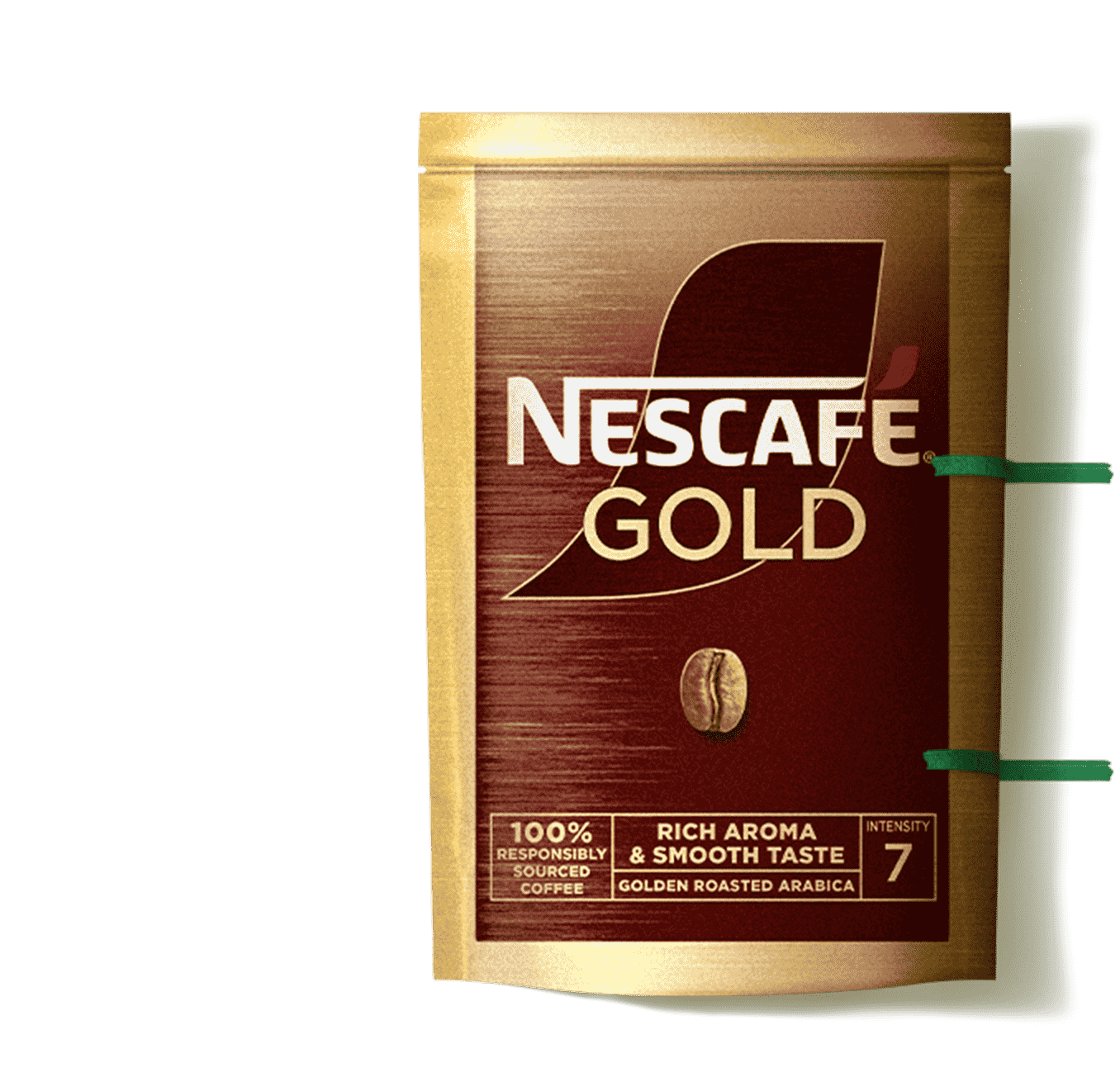
-
97%less packaging weight*less packaging weight*
-
made with responsibly sourced coffeemade with responsibly sourced coffee
NESCAFÉ® GOLD Soft Pack
NESCAFÉ® GOLD is now available in 150g soft packs, perfect for refilling your glass jar. These recyclable packs use 97% less packaging. *compared to our glass jars, with a resealable top to preserve the freshness and taste NESCAFÉ® is known for.
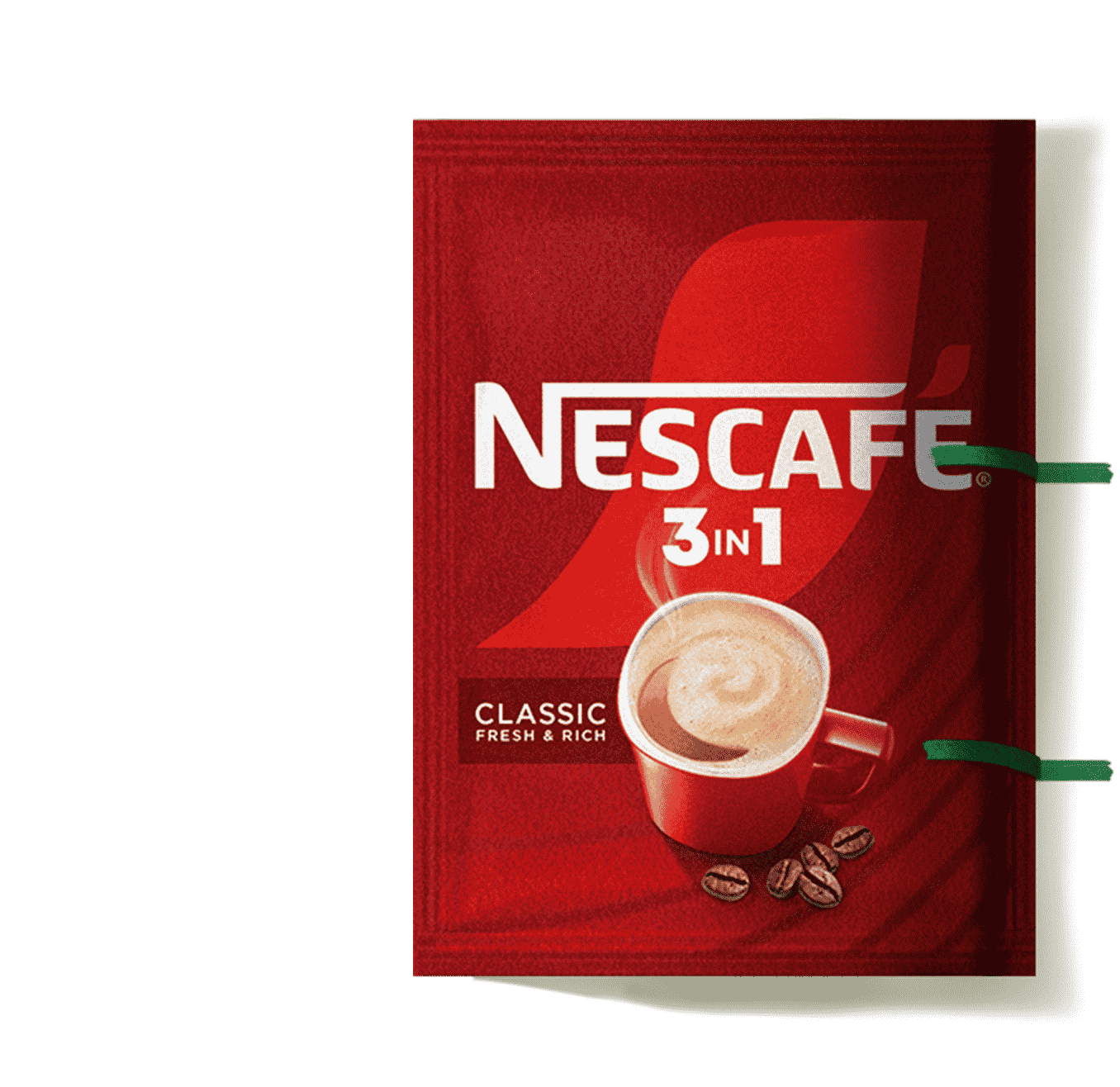
-
mono-structured plasticmono-structured plastic
-
designed to recycledesigned to recycle
NESCAFÉ® 3in1
Our new mono-structure sachets only use one type of plastic, so they’re designed for recycling, yet they keep your coffee just as fresh as before. It's the same great coffee, but in new packs that are easier to recycle.
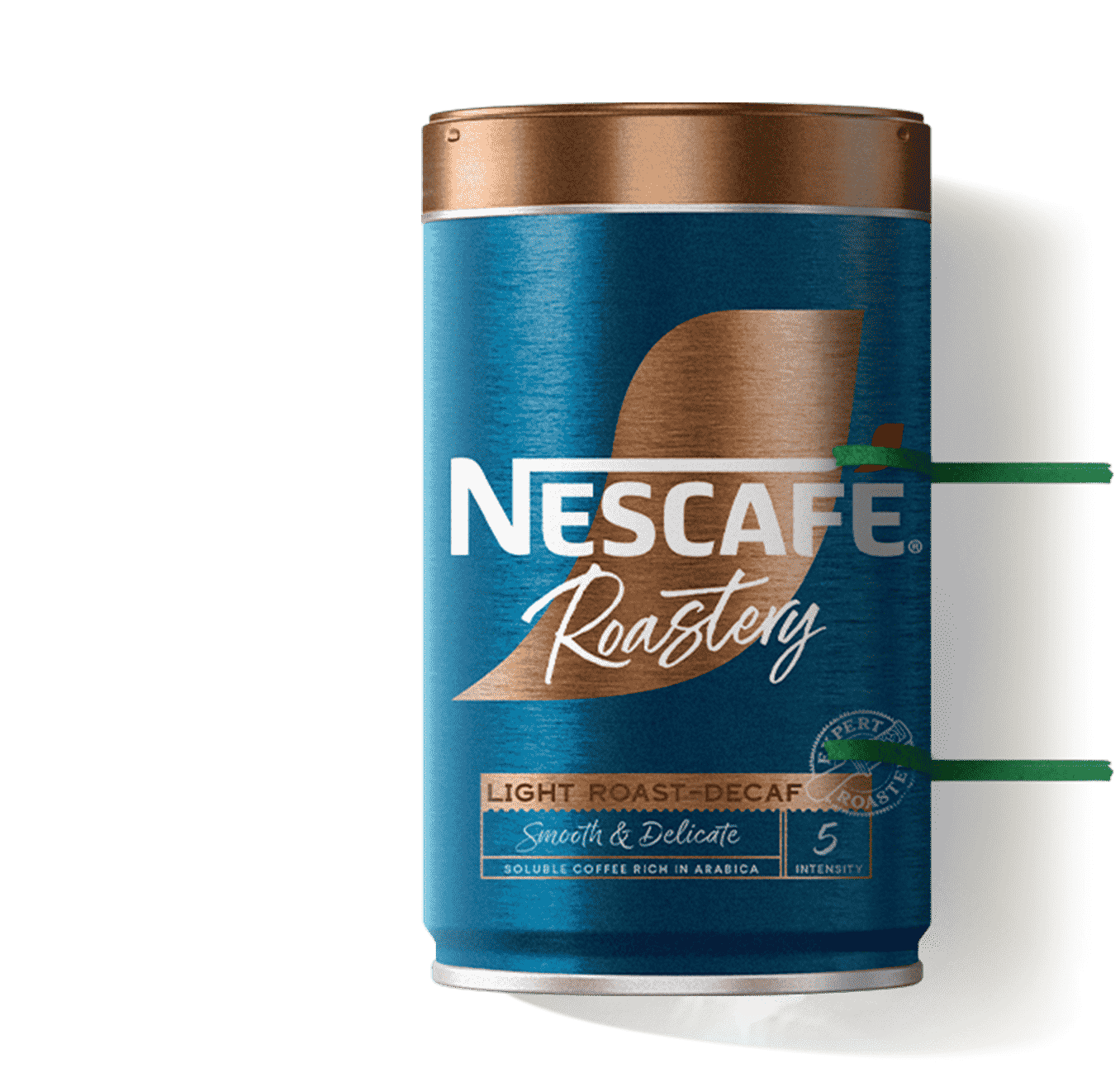
-
recyclable metal tinrecyclable metal tin
-
made with responsibly sourced coffeemade with responsibly sourced coffee
NESCAFÉ® Roastery
Did you know that our Roastery metal tin and lid are recyclable? And this packaging helps to perfectly preserve NESCAFÉ®'s flavour, colour and aroma. So, enjoy your NESCAFÉ® and remember to give your tin a second life!
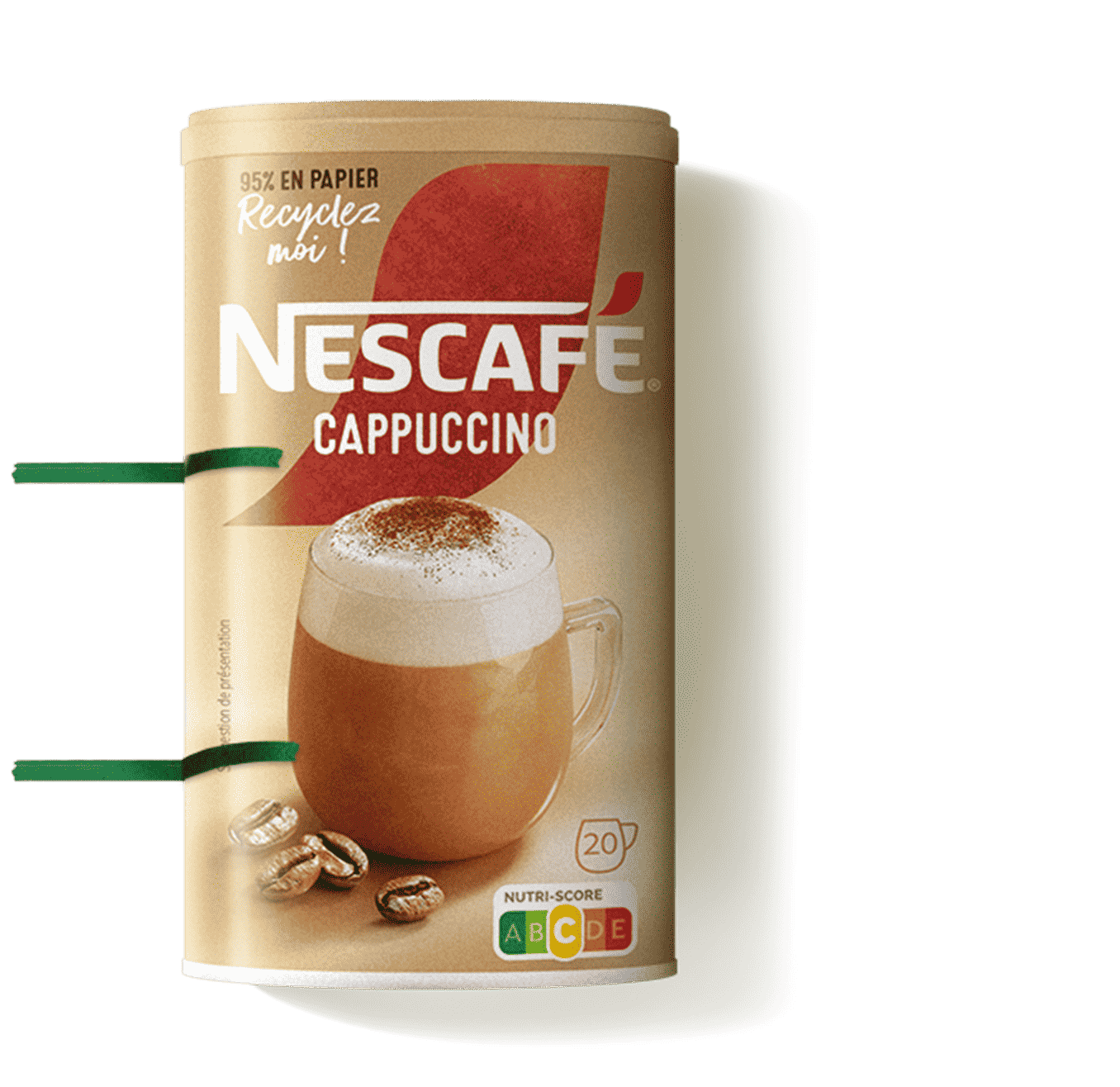
-
95%made of papermade of paper
-
made with responsibly sourced coffeemade with responsibly sourced coffee
NESCAFÉ® Cappuccino
We're excited to present our delicious cappuccino coffee, topped with a creamy long-lasting froth, now in a brand new paper tin pack, which is recyclable as it's made of 95% paper. Now you can have your NESCAFÉ®, and help make a difference too!
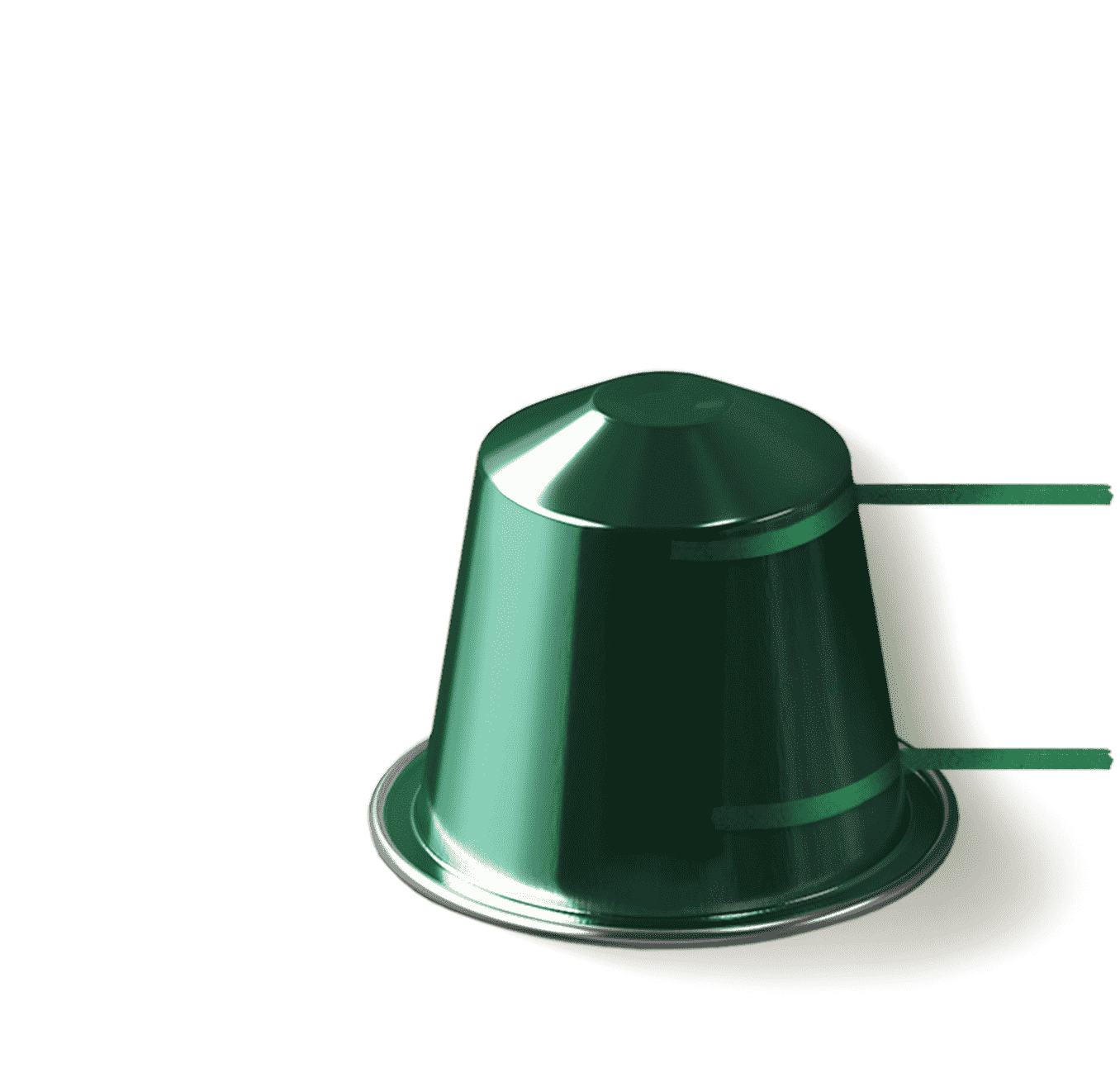
-
80%recycled alluminiumrecycled alluminium
-
made with responsibly sourced coffeemade with responsibly sourced coffee
NESCAFÉ® Farmers Origins Capsules
Why do we make our capsules with aluminium? Because it's recyclable and it retains our coffee's freshness and taste. At least 80% of the aluminium in NESCAFÉ® Farmers Origins coffee capsules is of recycled origin. That's good for coffee drinkers and the world.
Making a World of Difference
Planting millions of trees
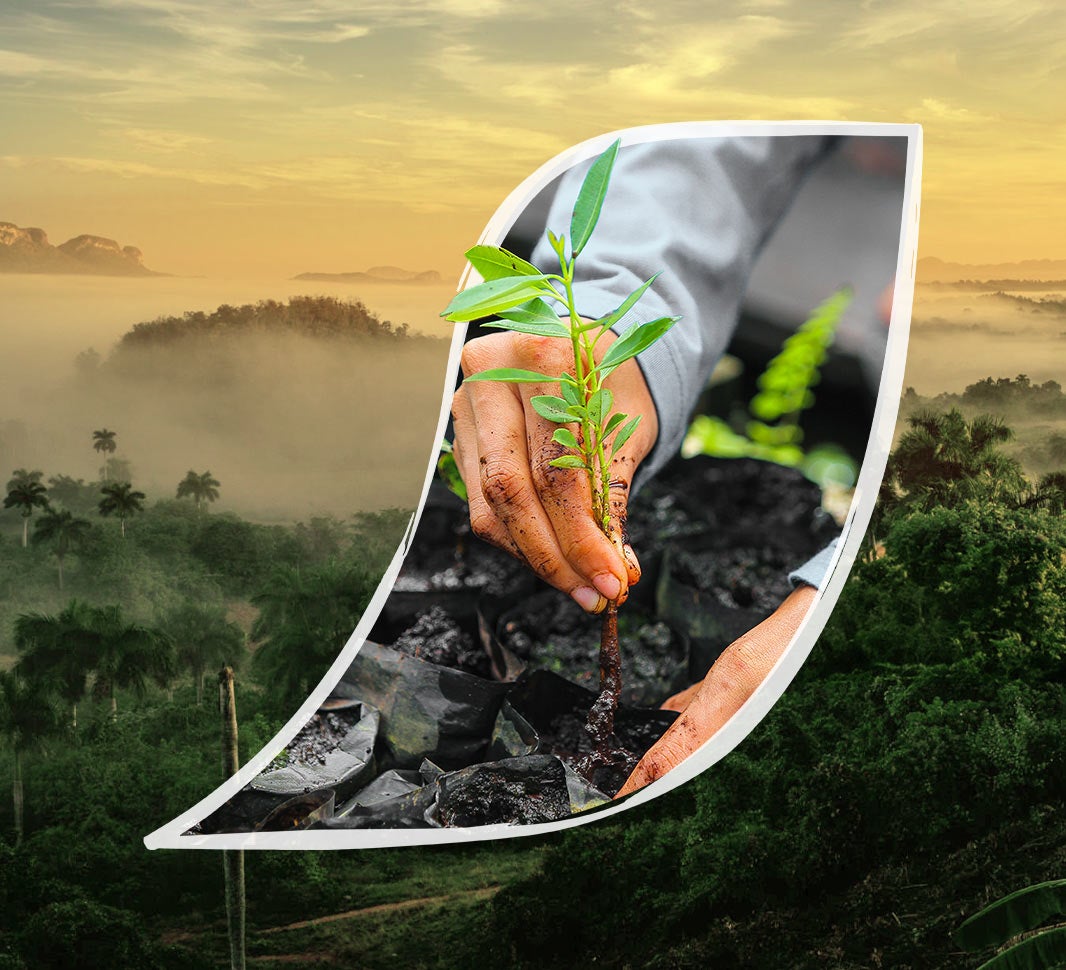
Working with farmers
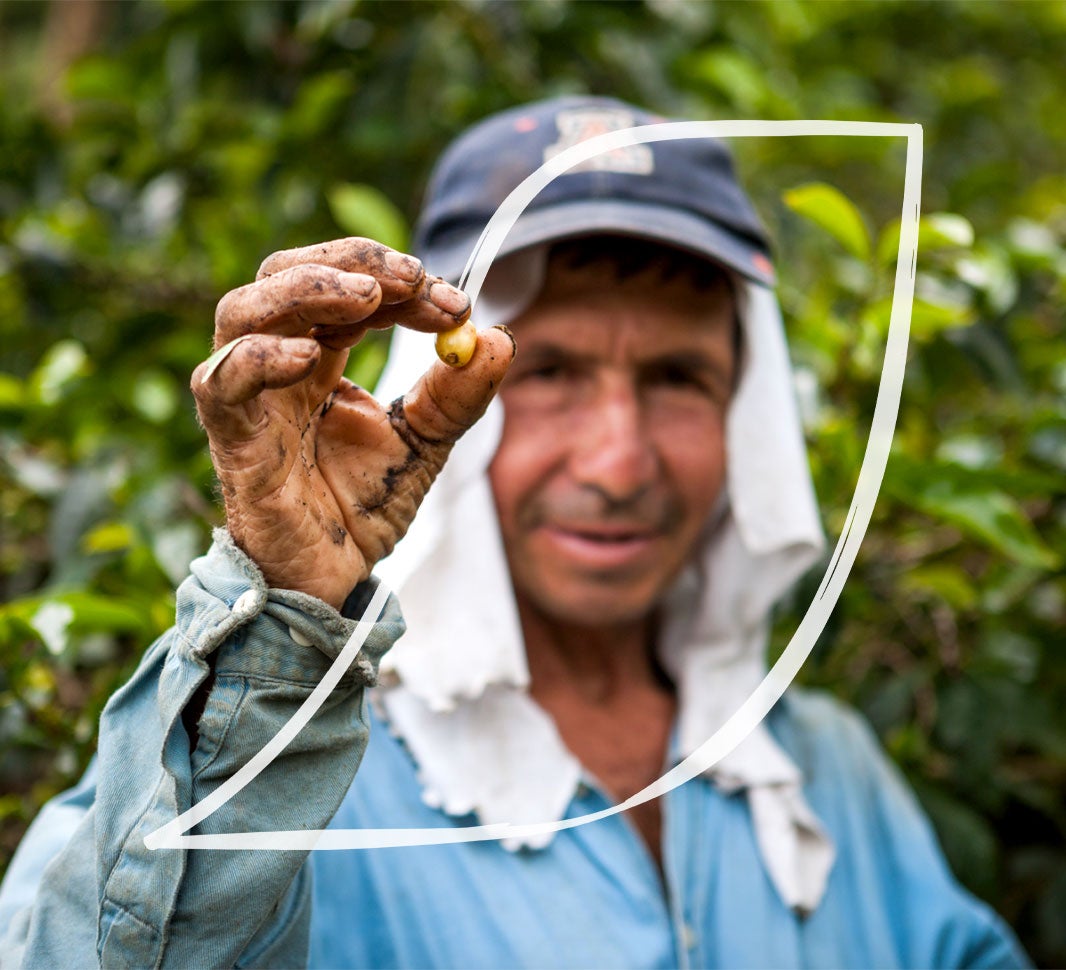
Did you know, boiling a whole kettle three times a day uses aprox. 102kWh of electricity a year? Heating water to just 80ºC could save 25kWh a year, enough to power a 50” LED TV for 340 hours3!

Sourcing coffee responsibly

Preventing CO2 emissions
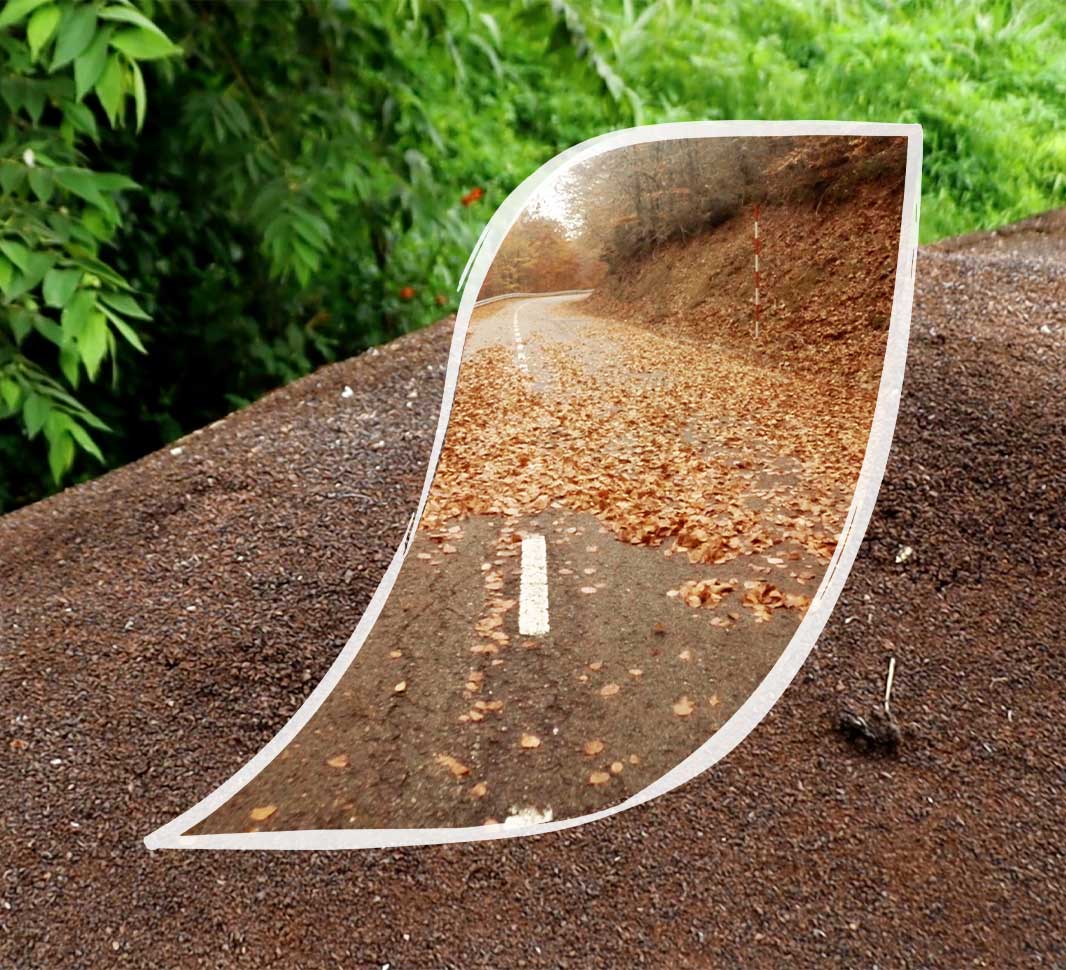
Saving water for comminities
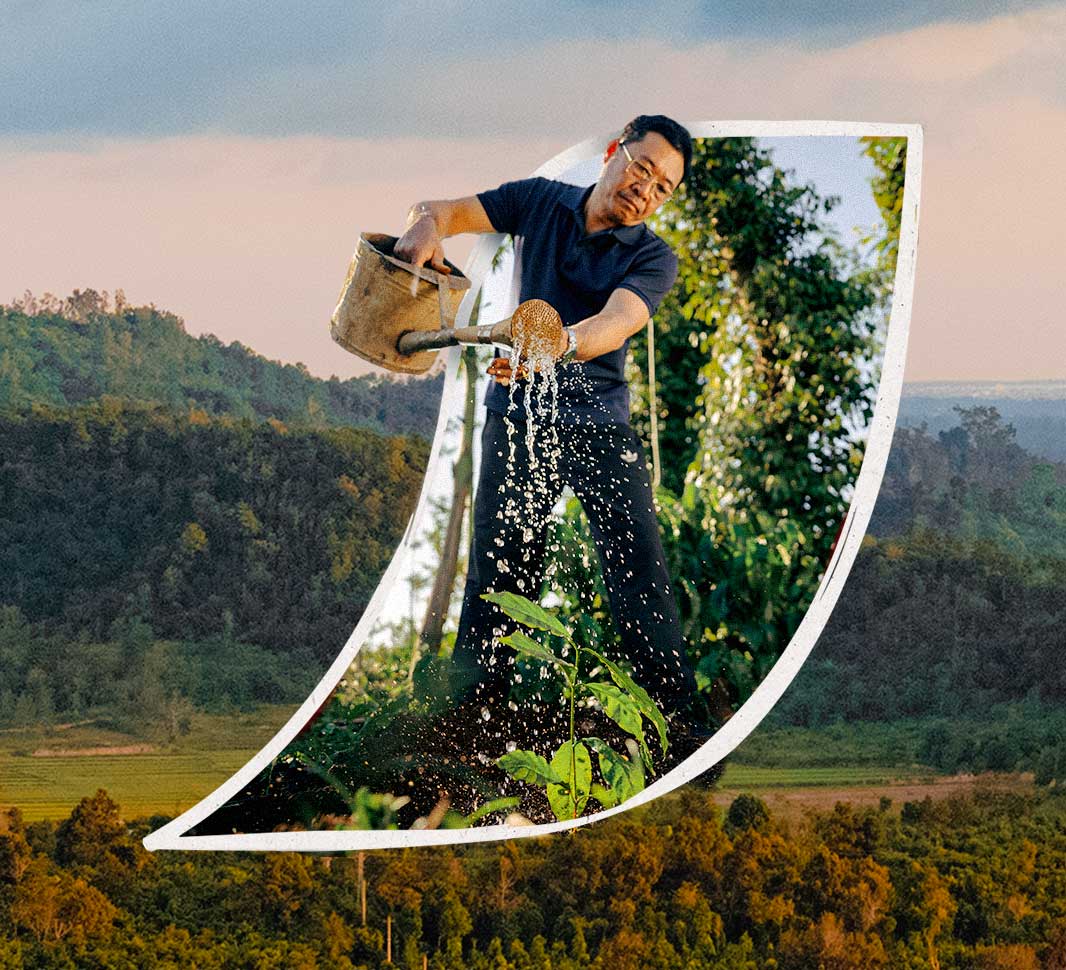
1. Source: NESCAFÉ® Plan 2030 and NESCAFÉ® Plan 2021
2. NESCAFE® aims to plant 20 million native trees in and around coffee farms by 2026.
NESCAFÉ® aims to use renewable electricity to power all our coffee factories by 2025.
3. Based on energy saved per person per year.
4. Sourcing coffee responsibly Source: NESCAFÉ®.
5. Based on the average amount of cups of coffee from 1kg of coffee beans. Source: Shop Coffee .
6. Based on a typical passenger vehicle’s emissions of about 46 metric tons of carbon dioxide per year. Source: EPA.
7. Water saving data from NESCAFÉ Vietnam
Today’s community favourites

How To Make An Americano At Home
What is an Americano?
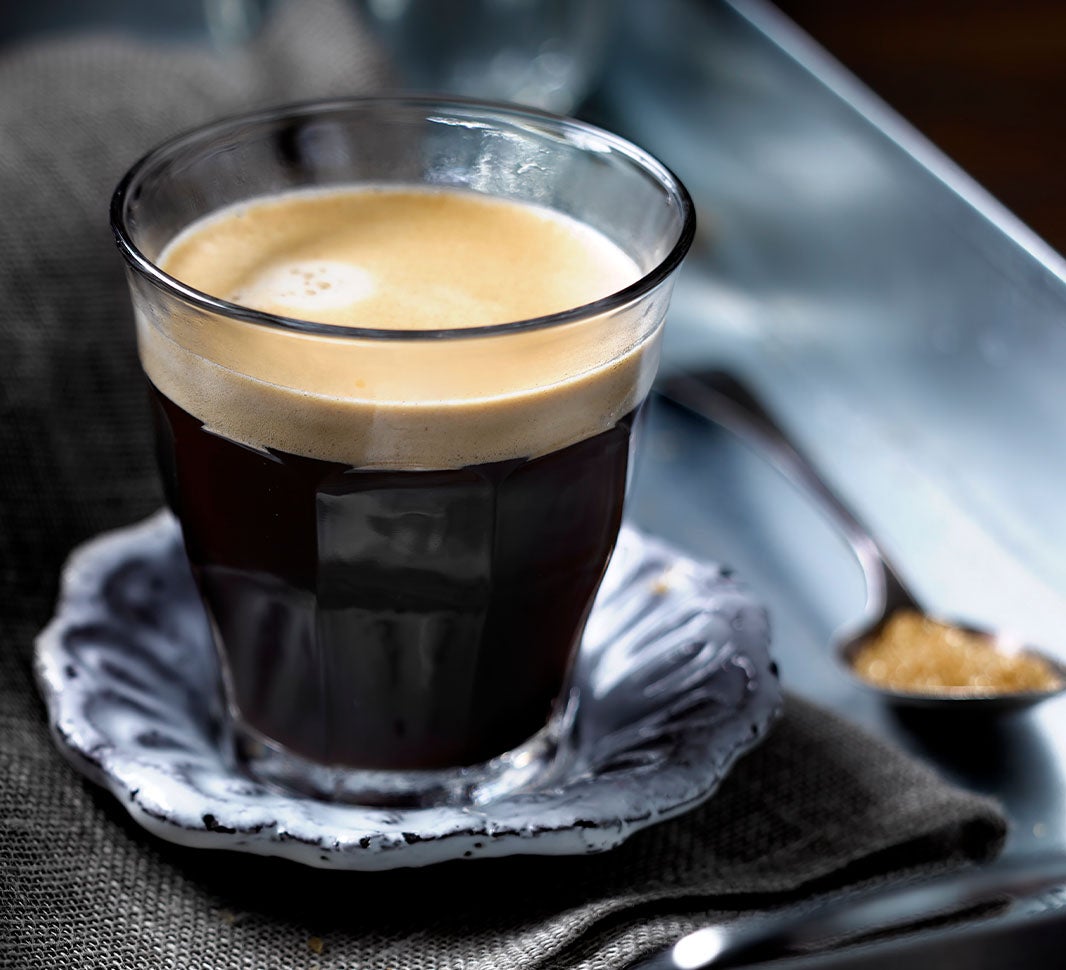
How to make an Americano at home

Ingredients for an Americano
- Hot water
- 1 – 2 tsps NESCAFÉ AZERA Americano or NESCAFÉ AZERA Americano Decaf
- Sugar to taste
Equipment
- Your favourite coffee mug – just remember an Americano is supposed to be a full-sized mug
- A spoon for stirring
Method to make an Americano
- Add 1 or 2 tsps of coffee to your mug (go for two if you want a stronger brew)
- Add 200ml of hot water (not boiling as this may burn the coffee)
Stir and enjoy!
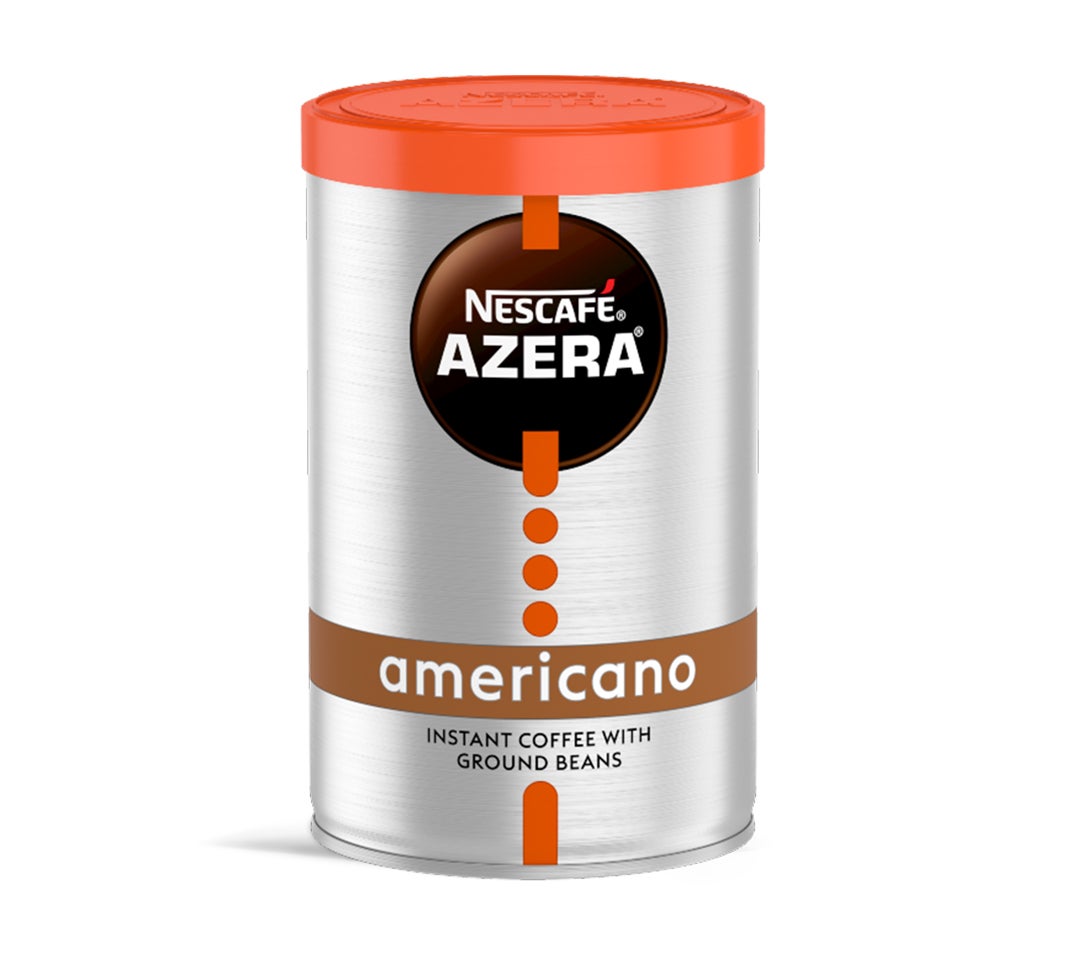
How to make an Iced Americano at home
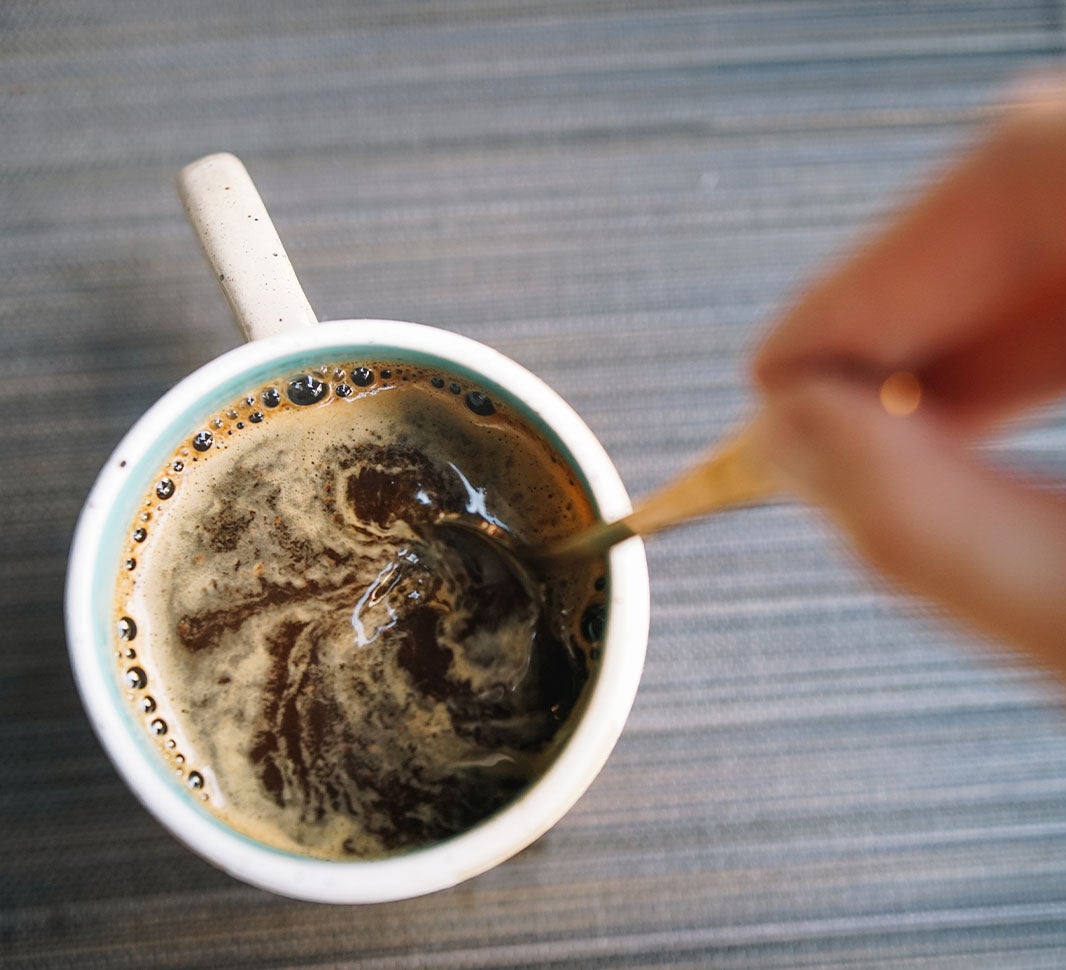
Ingredients for an Iced Americano
- 1 tbsp hot water
- 200ml cold water
- 1 - 2 tsps NESCAFÉ AZERA Americano or NESCAFÉ AZERA Americano Decaf
- Sugar to taste
- Ice cubes
Equipment
- A tall coffee glass works best for iced coffee
- A spoon for stirring
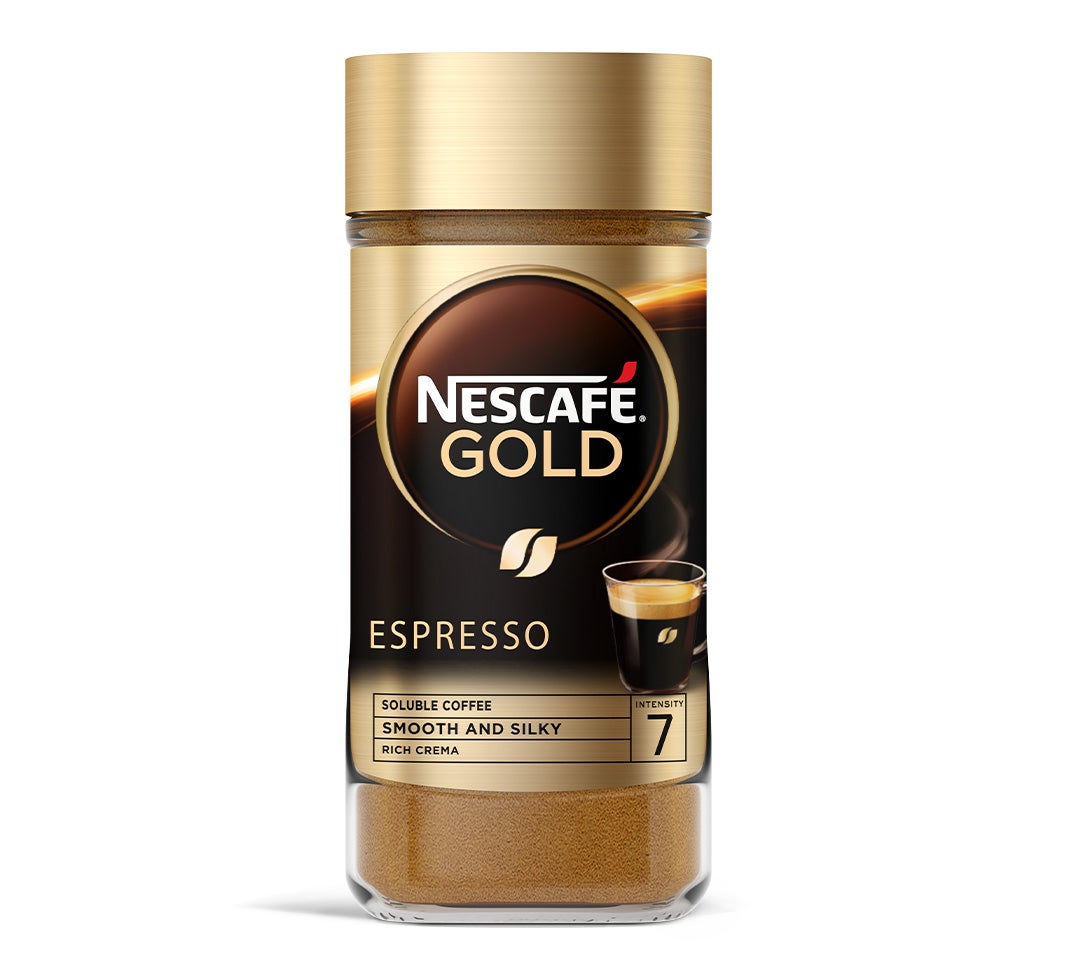
Method to make an Iced Americano
- Add 1 - 2 tsps of coffee, sugar (if you like) and hot water to your glass and stir
- Add your ice cubes
- Fill the rest of the glass with cold water
- Stir and enjoy!
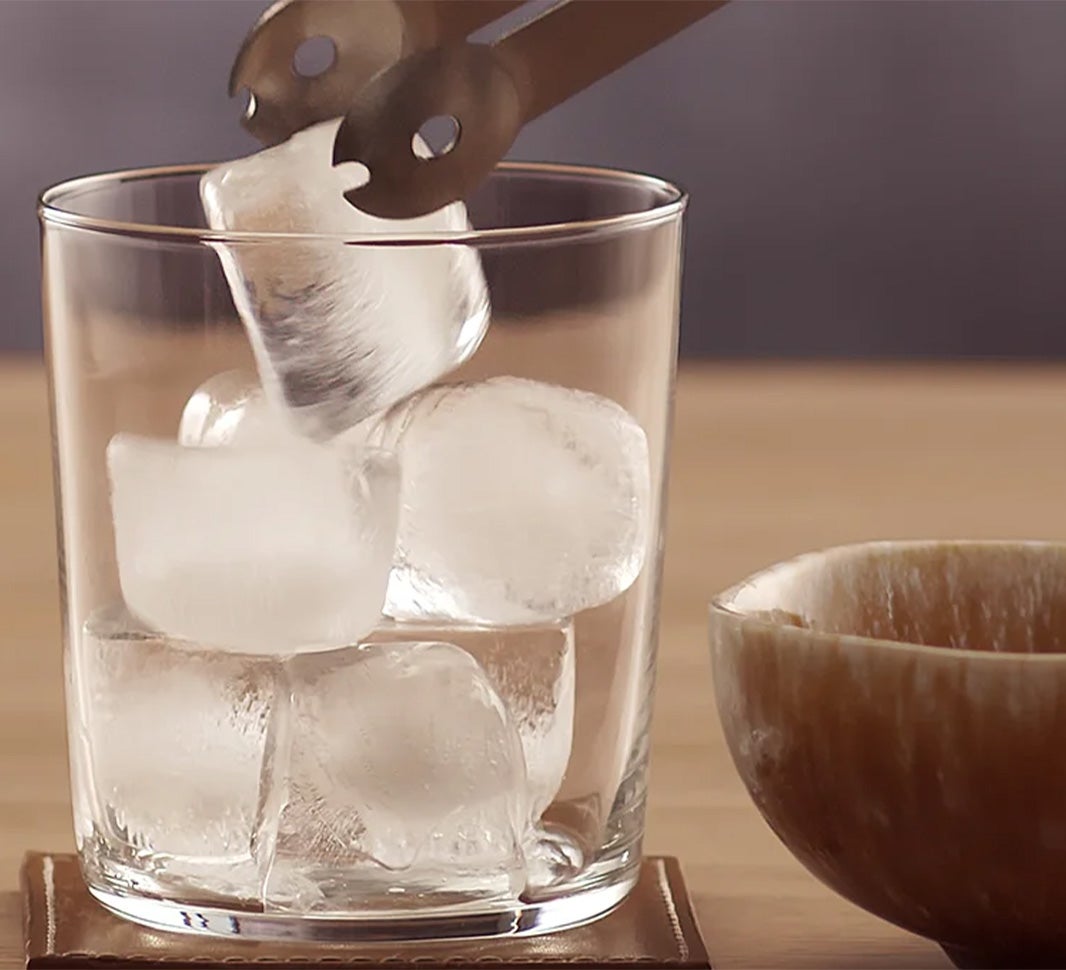
And that’s how you make an Iced Americano at home! An Americano is wonderfully versatile and tastes totally delicious both hot and cold. Not to mention you can also experiment with adding more/less water to find your sweet spot.
There you go, the best way to make your Americano perfectly at home, every time.
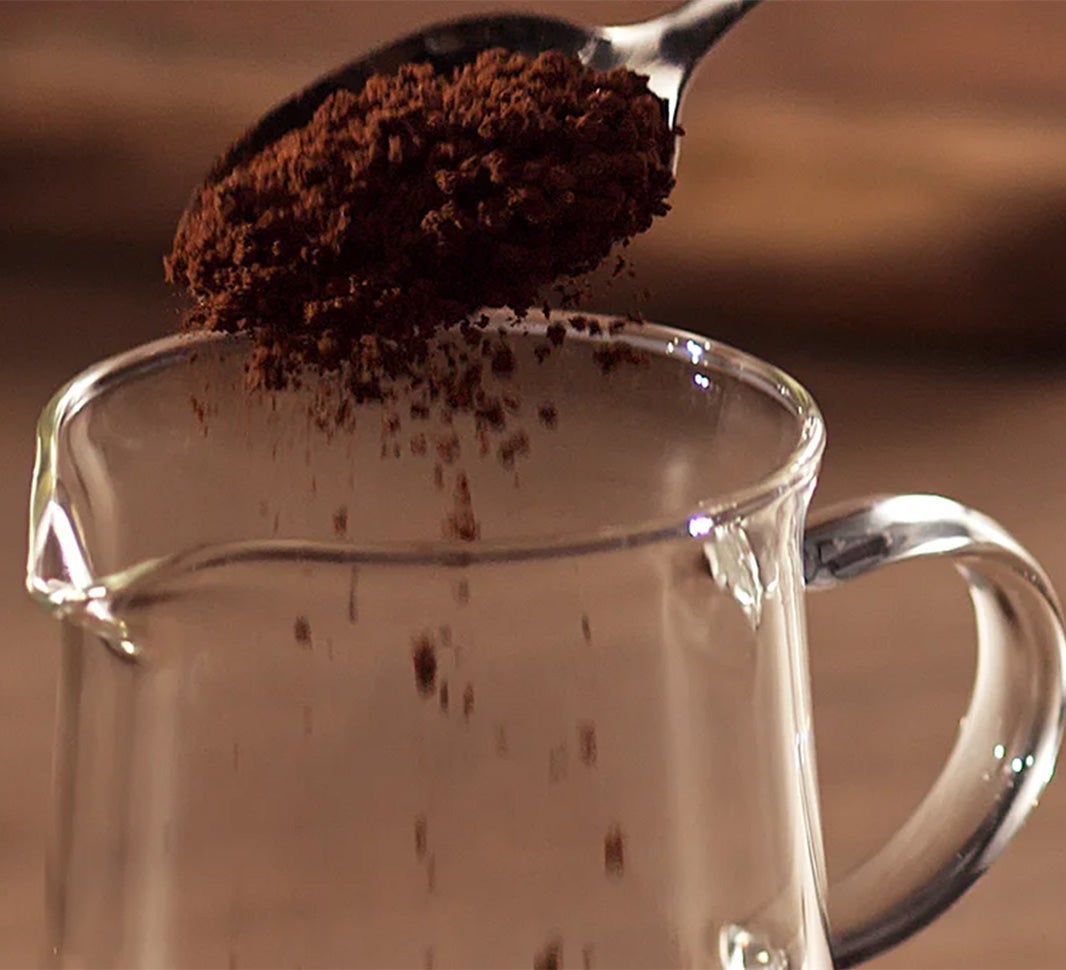
Today’s community favourites

What Is An Irish Coffee?
Treat yourself
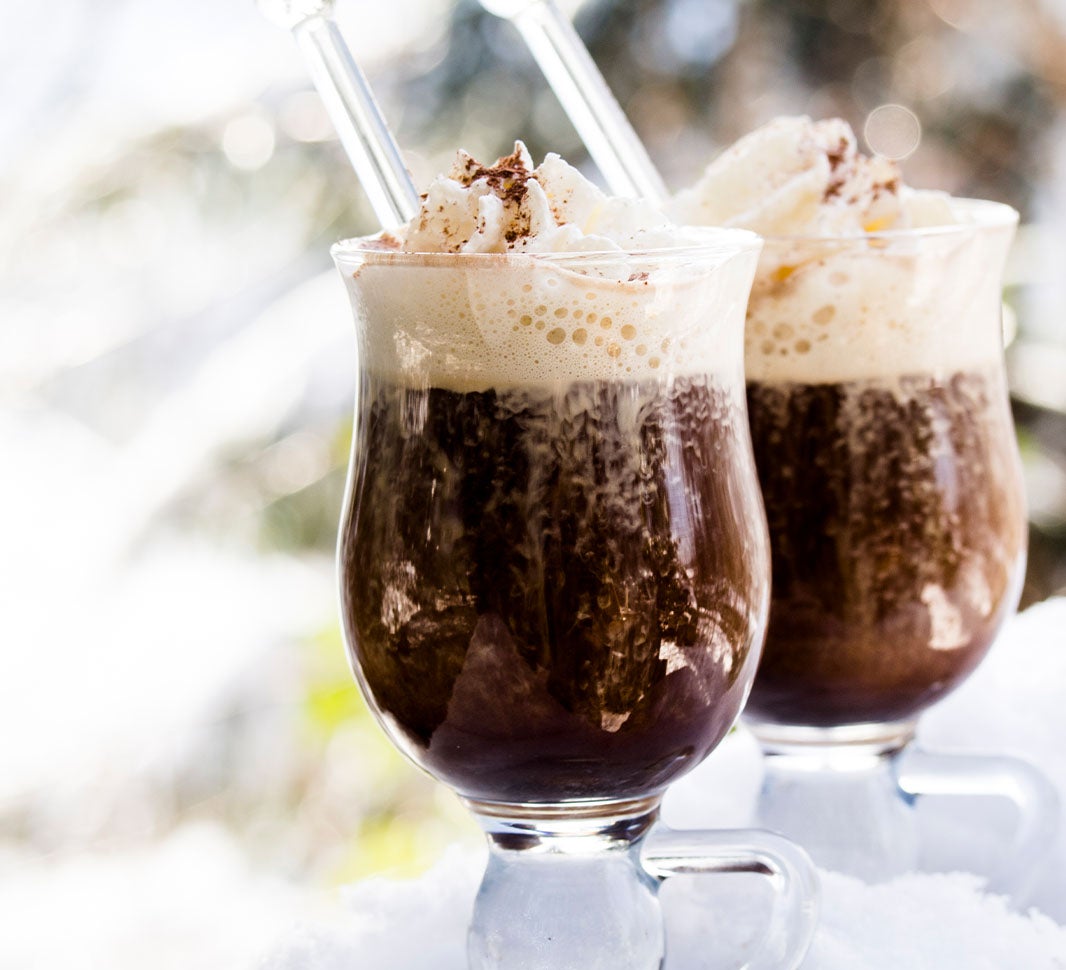
Irish coffee origins
The idea of alcoholic hot coffee drinks has been around for some time, dating back to the mid-nineteenth century in Viennese, German and Denmark coffee houses. But the Irish coffee is said to have first been created in the 1940s by Joe Sheridan, chef at Foynes Port near Limerick, Ireland. In 1943, a Pan Am flying boat flight to New York turned back to Foynes due to bad weather. Sheridan was asked to come back to the airport and prepare hot food and drinks for the passengers, who were feeling the winter weather. He whipped up a concoction he was confident would warm up the passengers. When an American passenger asked if it was a Brazilian coffee, Sheridan replied that it was in fact an Irish coffee.
In 1951, travel writer Stanton Delaplane sampled Sheridan's Irish Coffee at Foynes Airport. He introduced this new coffee to Jack Koeppler, the owner of The Buena Vista hotel, and asked him to recreate it as best he could. But after many attempts, it still wasn't quite right. The taste was off and the cream kept sinking! This encouraged Koeppler to return to the source and find out exactly how to make this unique coffee from the Joe Sheridan himself in Limerick, Ireland. On his return, Koeppler perfected the recipe that is still used at the Buena Vista today. Sheridan was also offered a job at The Buena Vista and he settled in San Francisco, working at The Buena Vista for the next ten years.

Irish coffee variations
When asking ‘what is an Irish coffee?’, it’s not always easy to get a straight answer as there are many variations of this coffee drink, often given the same name. In Spain, Irish coffee can be served with a bottom layer of whiskey, a separate coffee layer, and a layer of cream on top. Often, special devices are used for making it. In Southeast Asia, you may encounter a cocktail of iced coffee and whiskey, sometimes without cream, under the name ‘Irish coffee’. Gaelic coffee is very similar to Irish coffee, but instead of Irish whiskey, Scotch whiskey is used instead. And in Russia, vodka is used instead of Irish whiskey.
Now that we know what an Irish coffee is, why not discover what a cortado is?

What an Irish coffee is made of
Irish coffee has four main ingredients: coffee, Irish whiskey, sugar and cream.
What an iced coffee is made of
An iced coffee is a cold version of your favourite coffee, but it’s not simply a coffee that has been left to cool. Like a regular coffee, it’s usually a combination of hot espresso and milk. However, ice is added too.
What an espresso is made of
Espresso is a concentrated form of coffee, served in shots and it’s often the coffee base of many other beverages, such as cappuccino, latte, americano and macchiato.
What a mocha is made of
Although a mocha is often interpreted differently across the world, the basis is that a shot of espresso is combined with a chocolate powder or syrup, followed by milk or cream. It is a variant of a latte, in the sense that it is often 1/3 espresso and 2/3 steamed milk. However, a chocolate flavour is added, and this can be milk or dark.
What a latte is made of
A latte or caffè latte is a milk coffee that is made up of one or two shots of espresso, lots of steamed milk and a final, thin layer of frothed milk on top.
What a cappuccino is made of
A cappuccino is the perfect balance of espresso, steamed milk and foam. This coffee is all about the structure and the even splitting of all elements into equal thirds.
What an americano is made of
An americano is just water and espresso. It’ll either be served 1/2 and 1/2 or 1/3 espresso to 2/3 water, depending on the coffee shop in question or how you’ve chosen to brew it.
What a cortado is made of
Cortado translates to cut, meaning that the coffee is cut with milk. Unlike other coffee types the milk isn’t texturized and instead, a cortado is made with lightly steamed milk without froth or foam.
What a macchiato is made of
The macchiato is an espresso coffee drink, topped with a small amount of foamed or steamed milk to allow the taste of the espresso to still shine through. A macchiato is perfect for those who find espresso too harsh in flavour, but a cappuccino too weak.
What a flat white is made of
A flat white is a blend of micro-foamed milk poured over a single or double shot of espresso. This microfoam is steamed milk infused with air, which creates tiny air bubbles, to create a smooth and velvety texture and creamy taste.
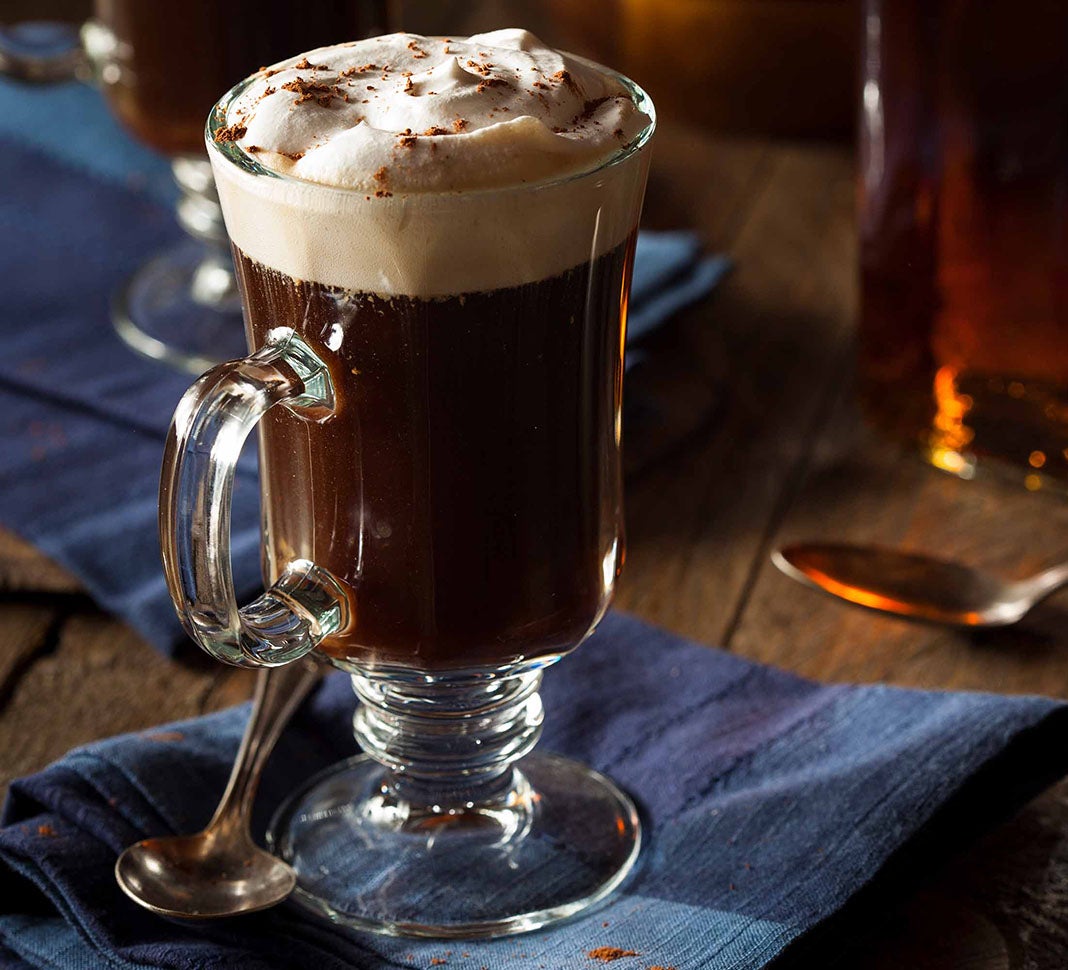
Today’s community favourites

Your Complete Coffee Cup Guide
Coffee cup, mug and glass size guide
Cappuccino cup - 180ml
Flat white cup - 160ml
Standard mug - 350ml
Macchiato cup - 60ml
Bowl - 160ml
Latte glasses - 220ml
Cortado glass - 135ml
Irish coffee glass - 250ml
Turkish coffee cup - 75ml
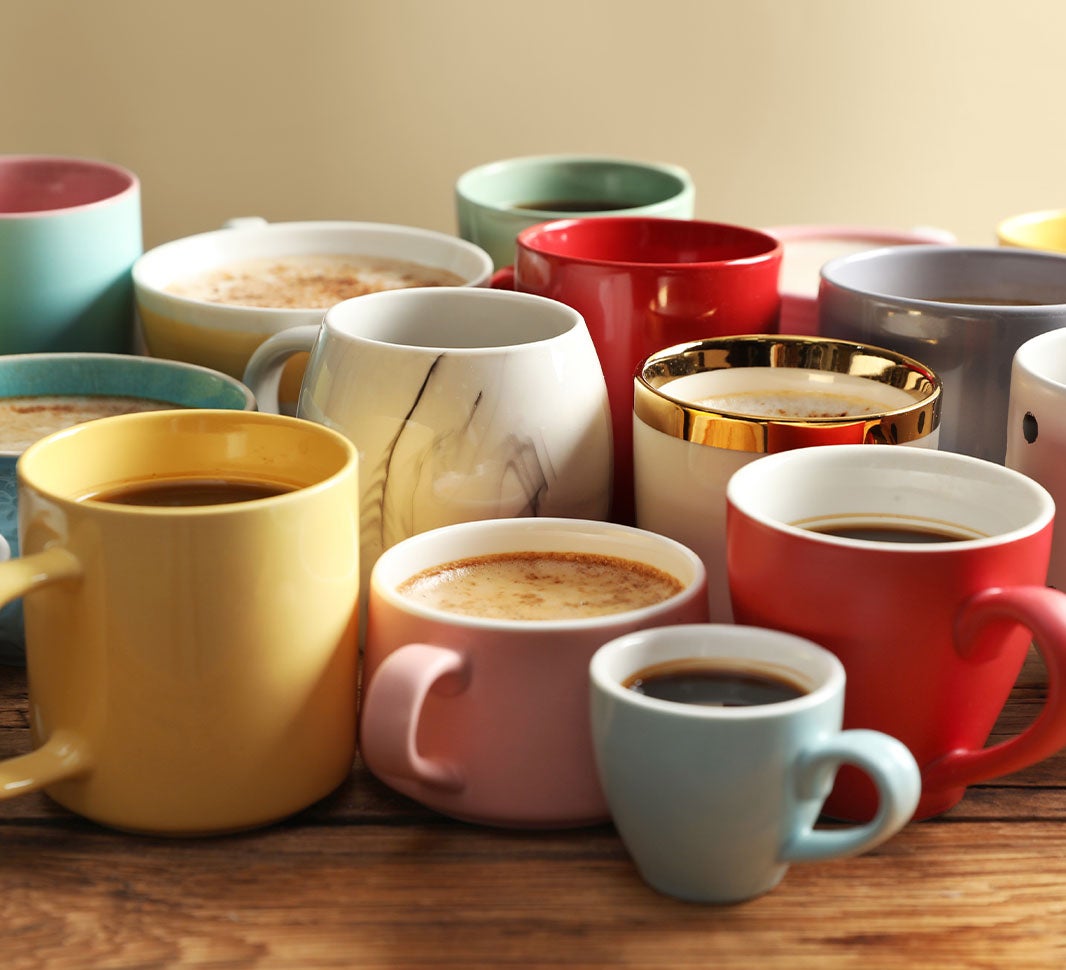
The standard coffee mug
Approx. 350ml in size
For most of us at home, we have a special mug that we drink our favourite NESCAFÉ coffee coffee from. Whether it’s personalised, giant, or one with sentimental value, we all have our favourite coffee cup in the cupboard.
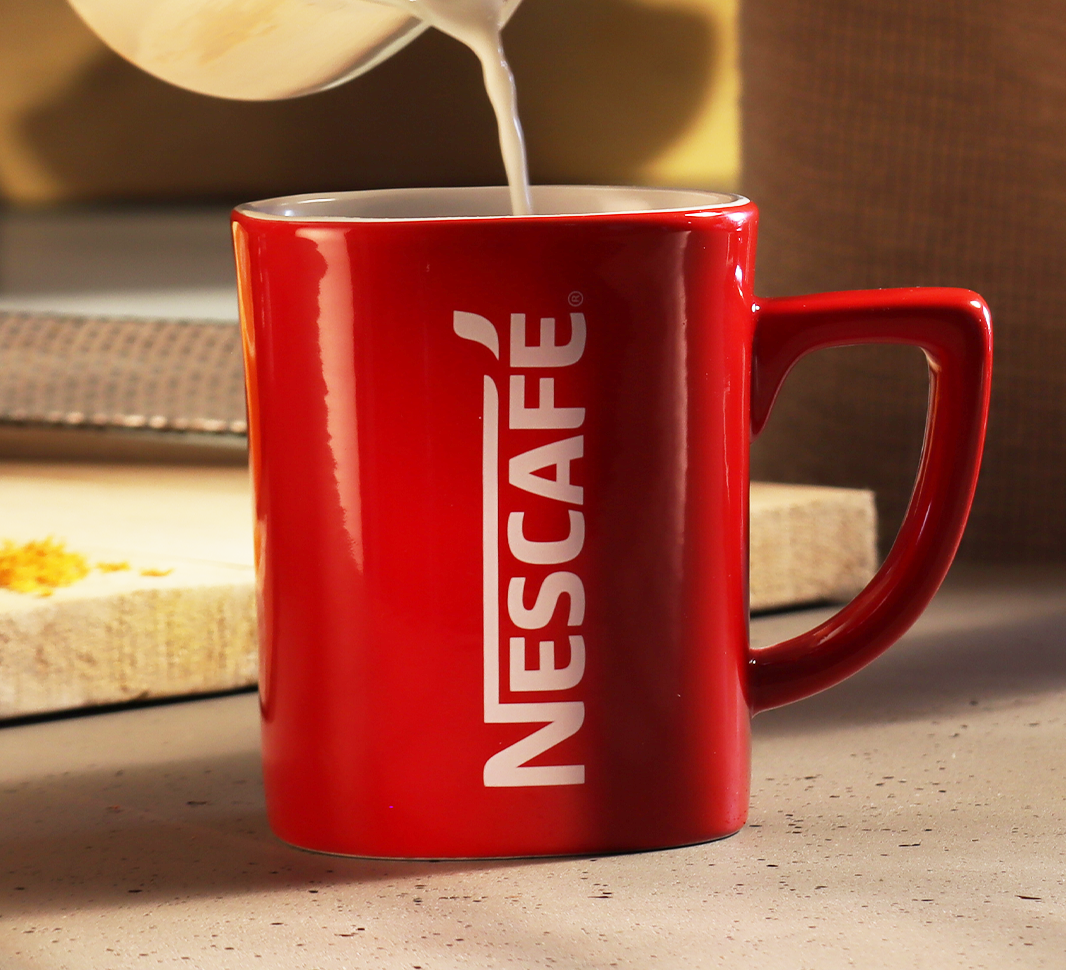
The espresso cup
Approx. 60ml in size
An espresso cup, also known as a demitasse cup - the French word for half cup, is the smallest of the coffee cups. This cup tends to be narrower at the base, and wider at the rim. The espresso cup can't be too big, as this can cause the crema to spread out, become too thin, and fade quickly. A larger coffee cup also affects the temperature of the espresso and it can become too cold quickly, exposing it to too much air, and, as we know, there is more to an espresso than simply shotting it, it’s all about the experience. Macchiatos are also served in espresso cups.

The cappuccino cup
Approx. 180ml in size
The Italian cappuccino cup is smaller than the standard cappuccino coffee cup. Most cappuccino cups are also narrower at the base and wider at the rim. This is for the same reasons as the espresso cup, except with the cappuccino cup, the espresso shot remains more concentrated in a narrow base. This dome-shaped cup will also allow the perfect foam topping. Cappuccino cups should also have matching saucers. Americano coffee can also be served in a cappuccino cup.
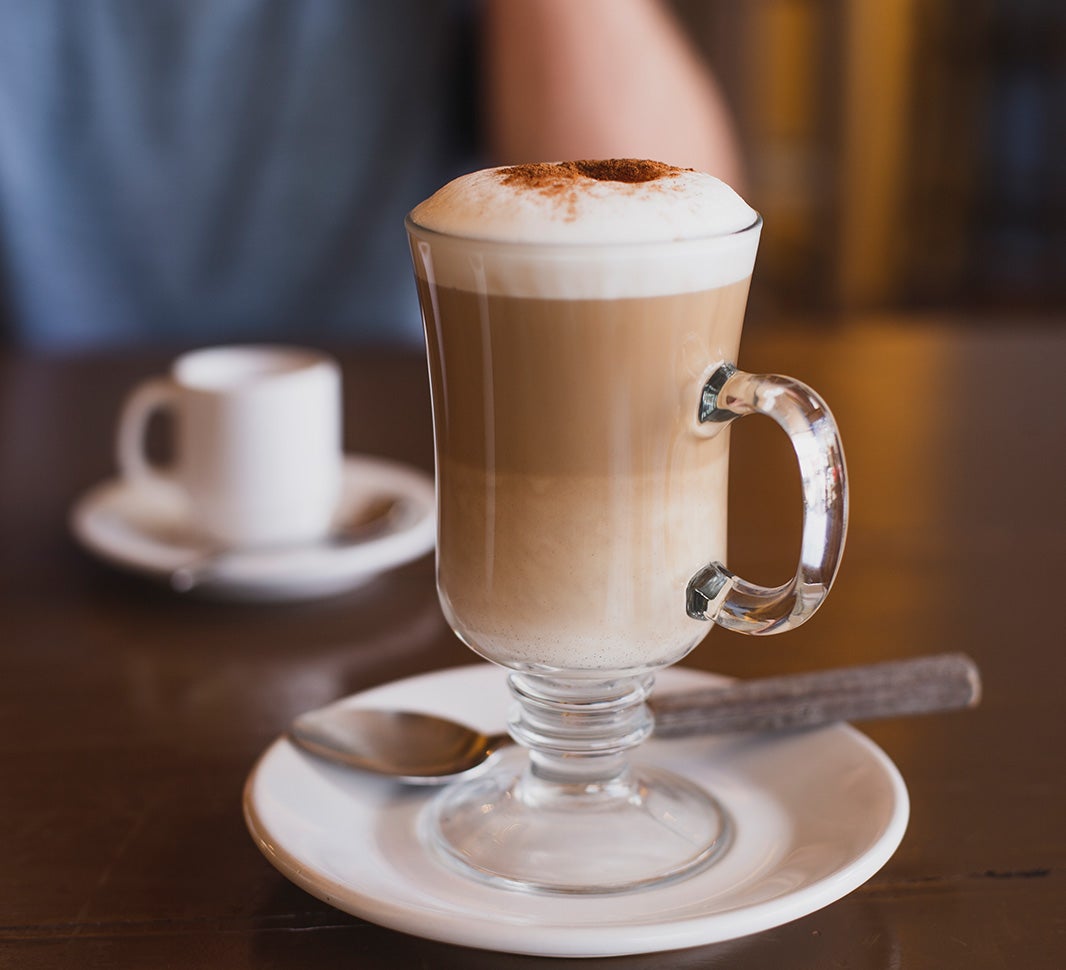
The flat white cup
Approx. 160ml in size
Served correctly, the flat white cup is similar to the cappuccino cup, but smaller in size and shaped like a tulip, being narrower at the rim. The size of the flat white cup allows the coffee flavour to remain prominent, as well as have a silky smooth and creamy texture.
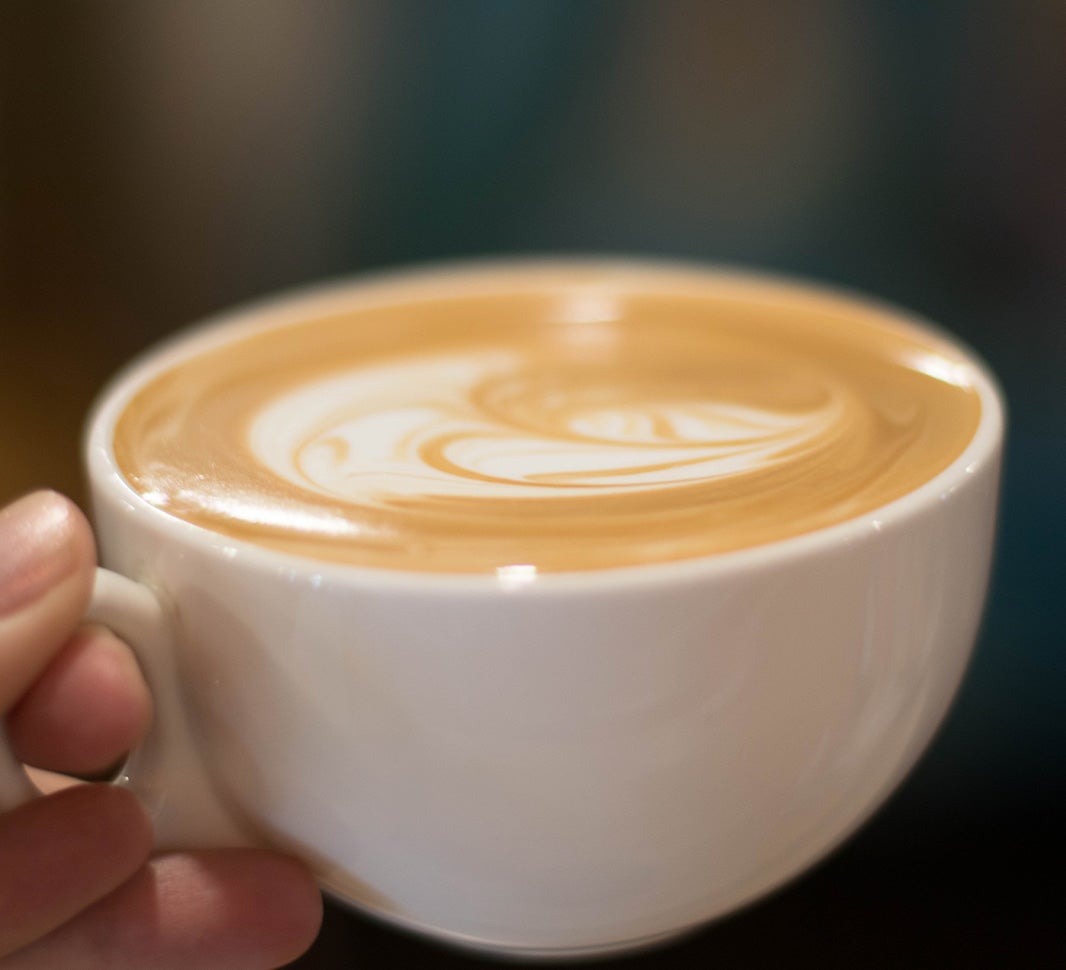
The Bol
Approx. 160ml in size
With French coffee, it’s common to drink a café au lait from a bowl-type coffee cup called a bol, which is usually made out of porcelain. When drinking café au lait from a bol, it should be held with both hands, as they tend to not have handles, and sipped like soup.
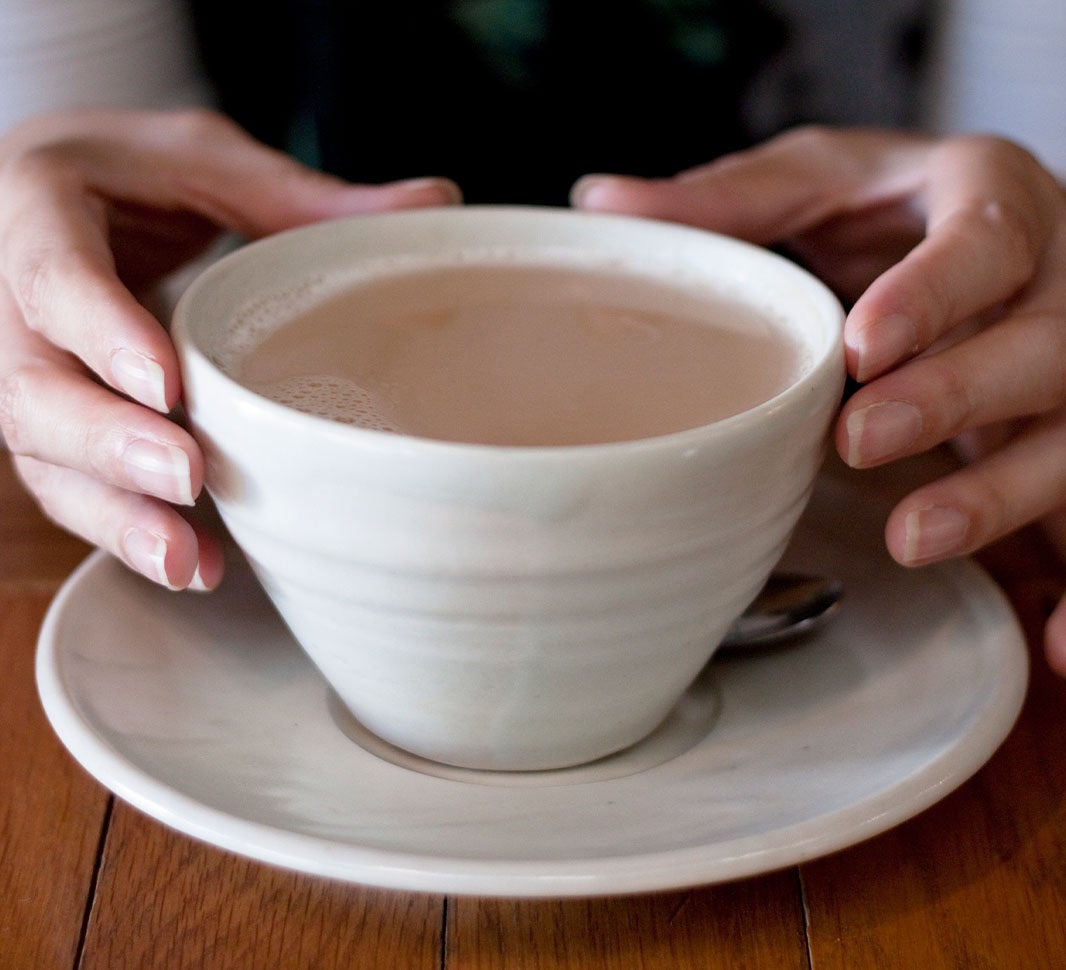
Latte glasses
Approx. 220ml in size
Lattes can also be served in a bowl like mug, but one that is typically larger than a cappuccino cup. This makes is easier to pour the steamed milk over the espresso, and maybe even create some latte art. However, typically and historically, the Italians have served their lattes in tall latte glasses. This is widely believed that it’s because it shows off the perfect layers of a latte. Latte glasses also help baristas achieve the right quantity of espresso, milk and foam.
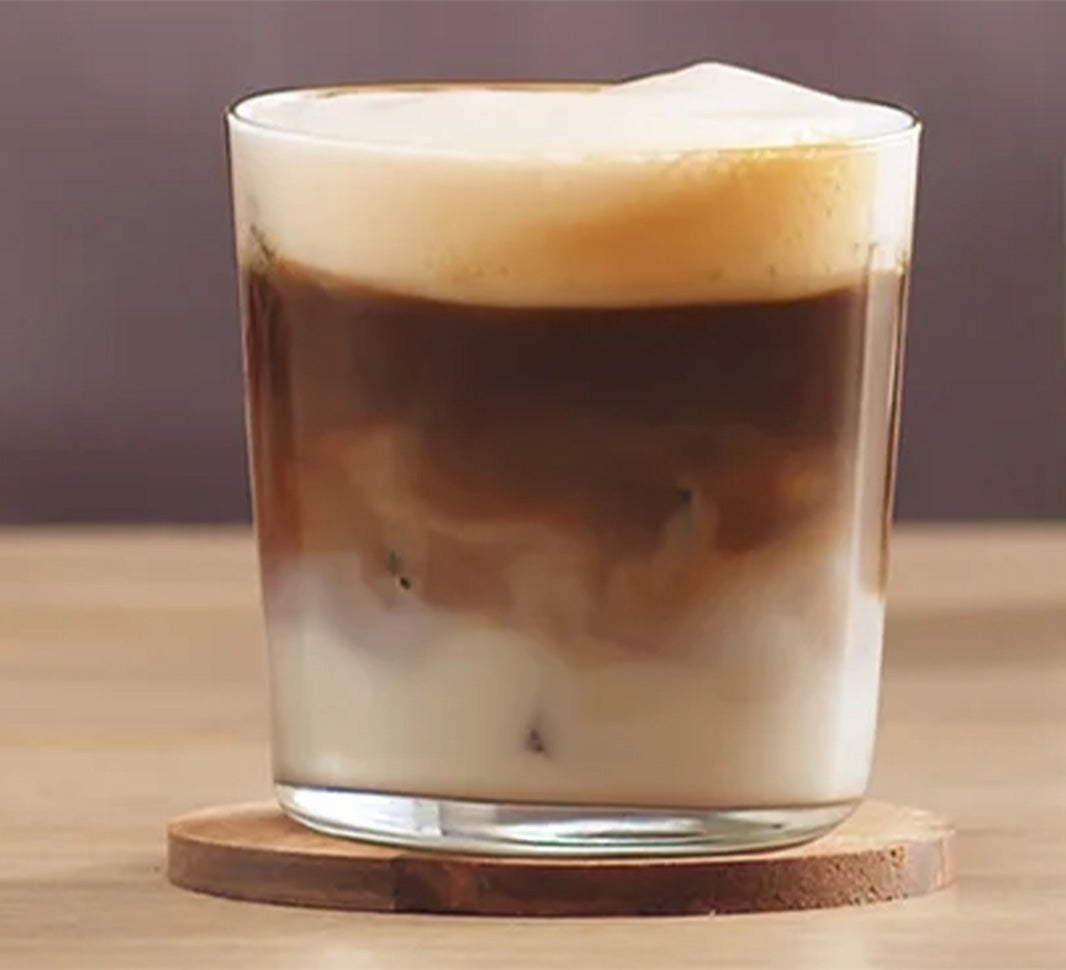
The cortado glass
Approx. 135ml in size
The cortado is quite a new face in the world of coffee. Starting in the Blue Bottle Café in San Francisco, Gibraltar tumblers were used to make this drink. Being a little too small for their cupping coffee, the baristas started accidentally making cortados in these glasses. Founder, James Freeman, says the Gibraltar as a cortado glass “has had surprising international success, appearing on menus in the United States, Europe, and Japan".
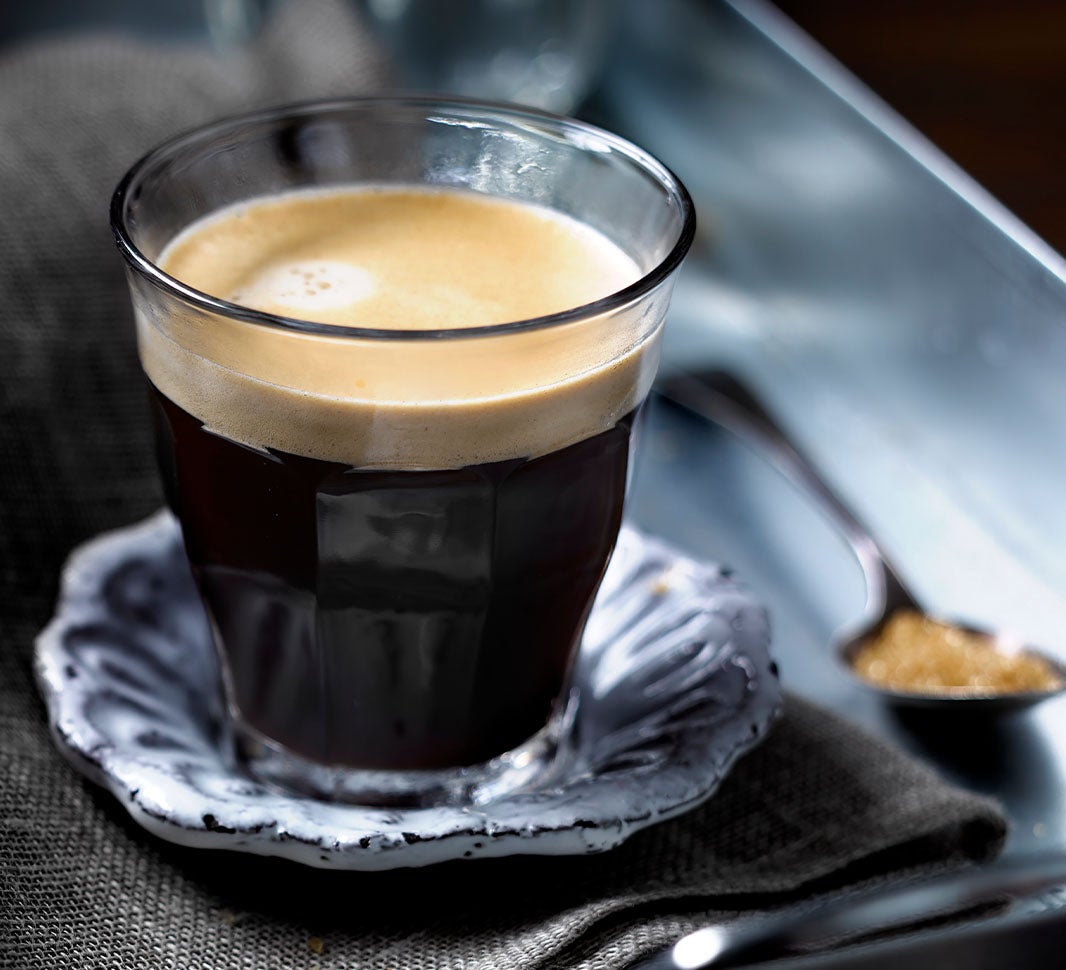
The Irish coffee glass
Approx. 250ml in size
The Irish coffee glass, unlike a standard coffee cup, is made from glass and has a short stem to elevate the drink. Some versions feature a handle, while most are compared to stout wine glasses. As the Irish coffee glass is clear, it allows its drinker to see its beautiful layering of coffee and cream.
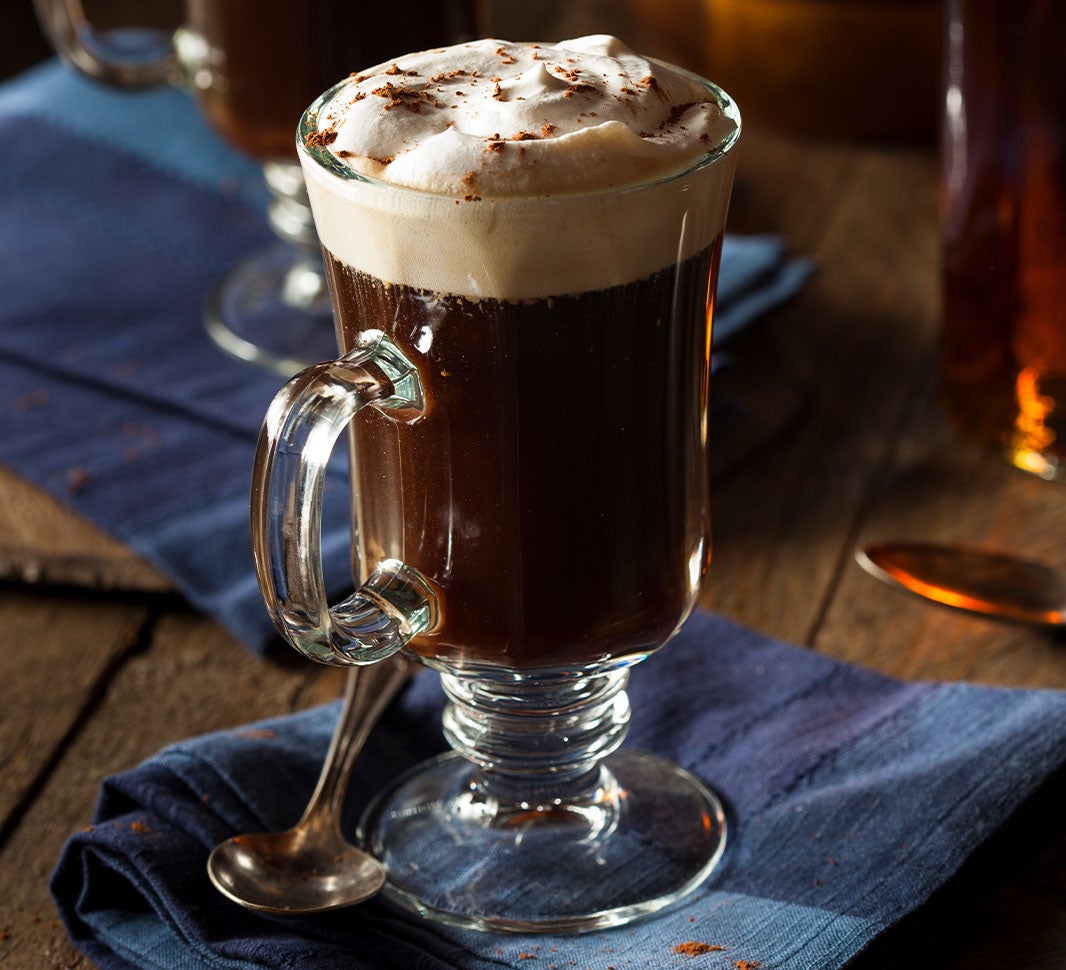
The Turkish coffee cup
Approx. 75ml in size
To make Turkish coffee, an ibrik or cezve, the name of the pot with a long handle, is used for brewing. Then, it’s poured into a separate coffee cup. Often referred to as a demitasse cup, the Turkish coffee cup is in fact different to ones used for espresso.
Turkish coffee has a much higher temperature than espresso because of how it’s made. Therefore, the coffee cup must withstand the temperature and hold a steady high temperature as the coffee grounds settle. This coffee drink is also designed to be enjoyed for a long time, not shot like espresso. Turkish coffee cups are often made of porcelain and have the right level of thickness to maintain its temperature.
Make your coffee moment that much more memorable with the right cup for you and your brew.
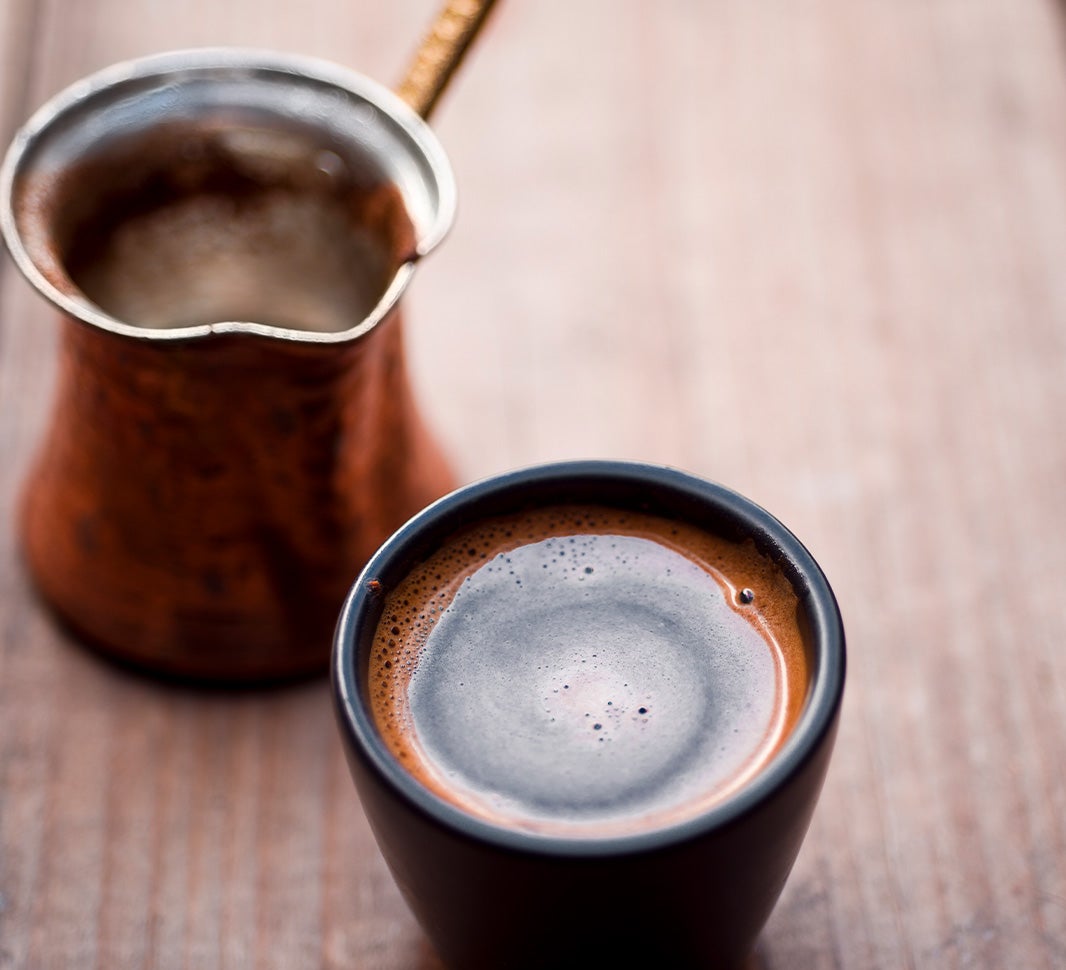
Today’s community favourites

How To Make a Mocha At Home
Enjoy in 3, 2, 1…

Ingredients for a mocha
- Your favourite strong instant coffee (we recommend NESCAFÉ GOLD Espresso)
- Milk or plant-based milk alternative*
- Sugar (to taste)
- Water
- Drinking chocolate* or cocoa powder*
- Cream for topping (optional)
- Chocolate sprinkles* (optional)
*Please check for allergens
Equipment
- Kettle
- Saucepan
- Thermometer
- Your favourite mug

Method to make a mocha at home
- Boil a cup of water in your kettle, add 2 teaspoons of your chosen instant coffee to your cup. If you have sugar in your coffee, add it to taste now.
- Then add 1 tablespoon of drinking chocolate or cocoa powder to your coffee.
- Add about 35ml of freshly boiled (not boiling) water to your instant coffee.

4. Next, it’s time to steam the milk. Measure out 250ml of milk.
- Then grab a saucepan and your thermometer, add the measured amount of milk and then heat it slowly on a medium heat, stirring from time to time to ensure it doesn’t boil. If you’re using dairy milk, it will need to reach 65°C, 60°C for soy or 54°C for almond.
- Once the milk is steamed, pour it over the chocolate and coffee mix.
- Add whipped cream and chocolate sprinkles if you wish.
That’s the simplest way to make your mocha at home. How refreshing!
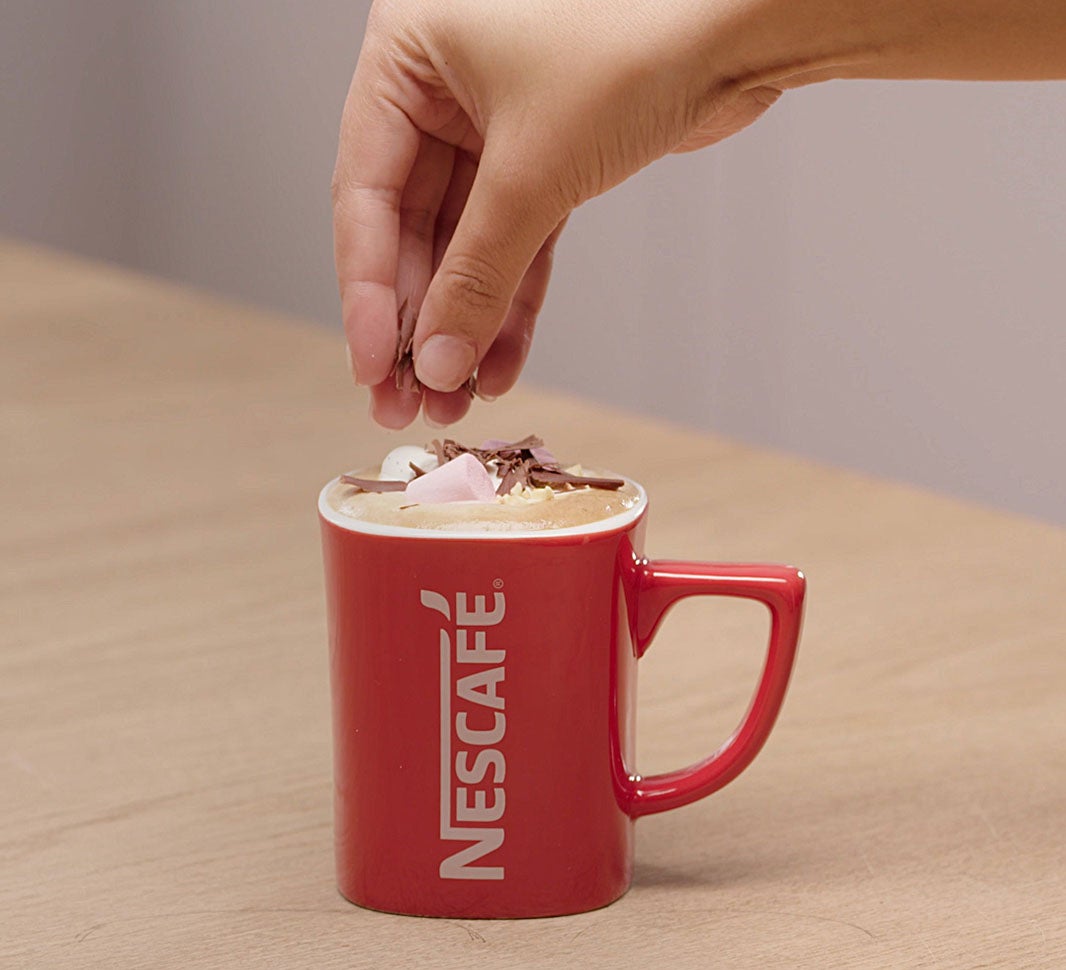
NESCAFÉ GOLD Frothy Coffee range
OPTIONAL
Of course, we understand you might not always have the time to whip up a hot drink from scratch! Why not indulge in NESCAFÉ GOLD Double Choc Mocha? Simply add hot water and your drink is ready in an instant.
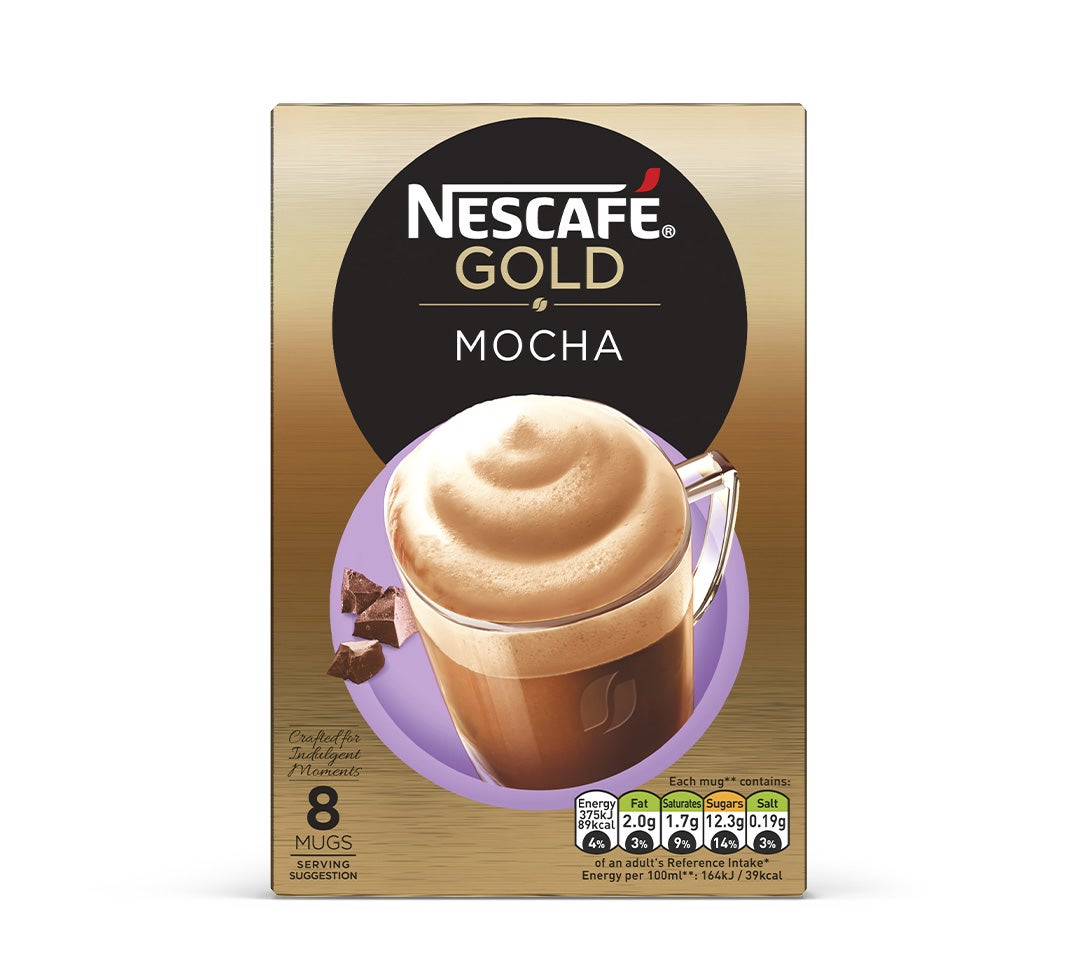
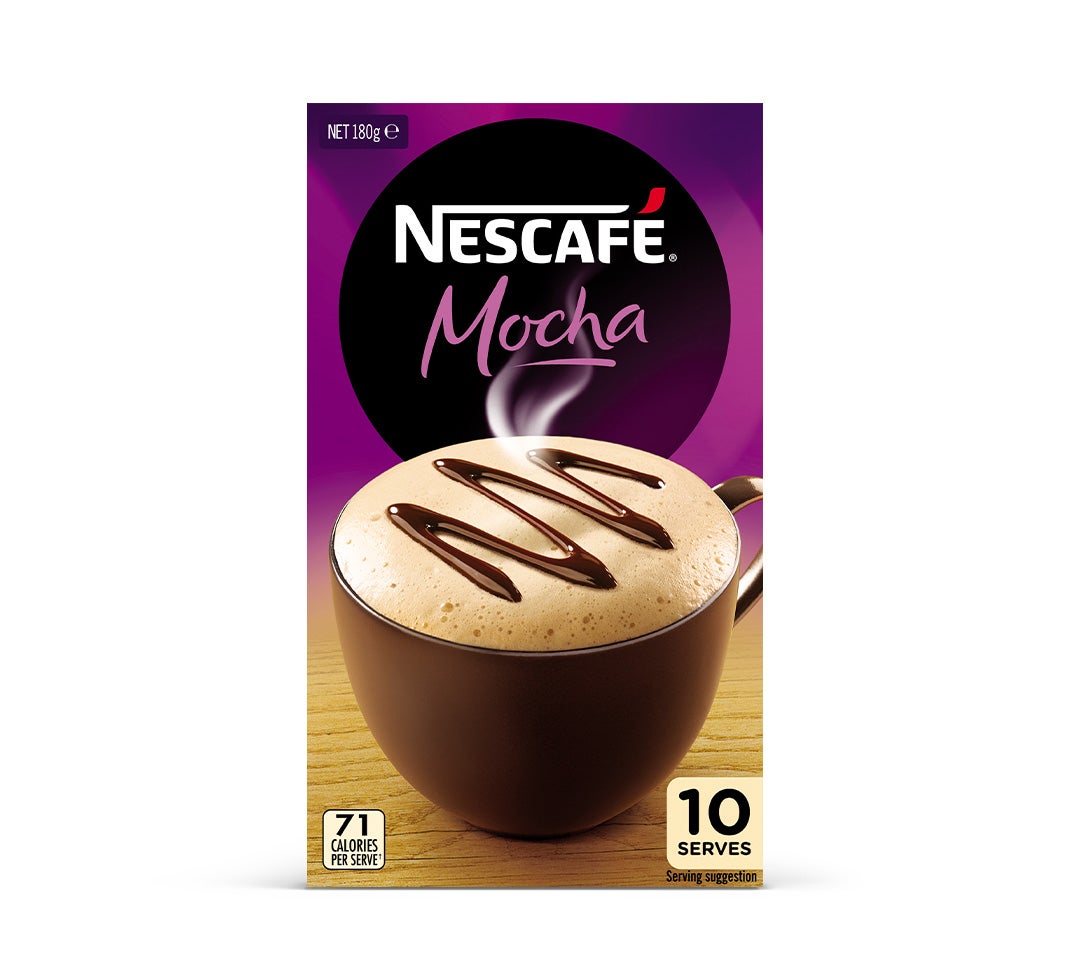
Today’s community favourites

How To Make a Latte At Home
Ingredients for a latte
- Strong brewed instant coffee (our NESCAFÉ GOLD Espresso works particularly well).
- Milk or plant-based milk alternative*
- Sugar or syrup (to taste)
*Please check for allergens
Equipment
- Tall latte glass
- Saucepan
- Thermometer
- Jar with lid or a milk frothing wand
- Spoon for stirring
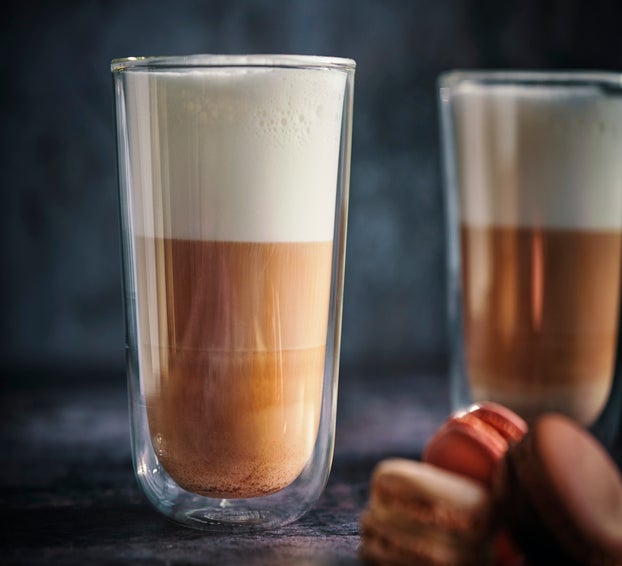
Method to make a latte at home
- Make your strongly brewed instant coffee in a tall latte glass.
If you’re adding sugar or syrup, add it to your coffee mixture and then set it aside for a moment. - Next, you need to steam your milk. Grab a saucepan and your thermometer, add the milk and then heat it slowly on a medium heat, stirring from time to time to ensure it doesn’t boil. If you’re using dairy milk it will need to reach 65°C, 60°C for soy or 54°C for almond.
- Now you’ve steamed your milk, you’ll need to froth it! Choose from the two options listed below to froth your milk.

Finally, add the milk to your latte glass and then all that’s left to do is enjoy!
How to froth milk with a milk frothing wand
STEP 1
Put the milk into a saucepan again, then place the frothing wand so it’s half way into the milk.
STEP 2
Turn on your frothing wand and pull it toward the surface of the milk slowly, then lower it down to the middle again, continue this process for around 30 to 45 seconds, or until the milk’s nice and foamy.

Of course you can always choose the trusted favourite NESCAFÉ GOLD Latte, if you’re in a rush and need a latte on the go.
As you can see, it’s easy to make your latte at home, you certainly don’t need a coffee machine!

NESCAFÉ GOLD Frothy Coffee range
OPTIONAL
Now that you know how to make a latte at home, why not try something from our NESCAFÉ GOLD Frothy Coffee range? These wonderfully foamy treats just require you to add water and stir, allowing you to enjoy a coffee shop style latte in moments. What’s more, we also have a huge range of flavours for you to try, from fan favourites caramel or vanilla to the more adventurous, Irish latte. The hardest part of the whole process will be choosing which one to try first!
Superior quality, velvety pleasure
Enjoy high quality coffee with the velvety froth and delicious taste of the NESCAFÉ GOLD Frothy Coffee range.

Today’s community favourites



